
OF THE FIRST ELECTRIC ROLLSROYCE ON PAGE 8!
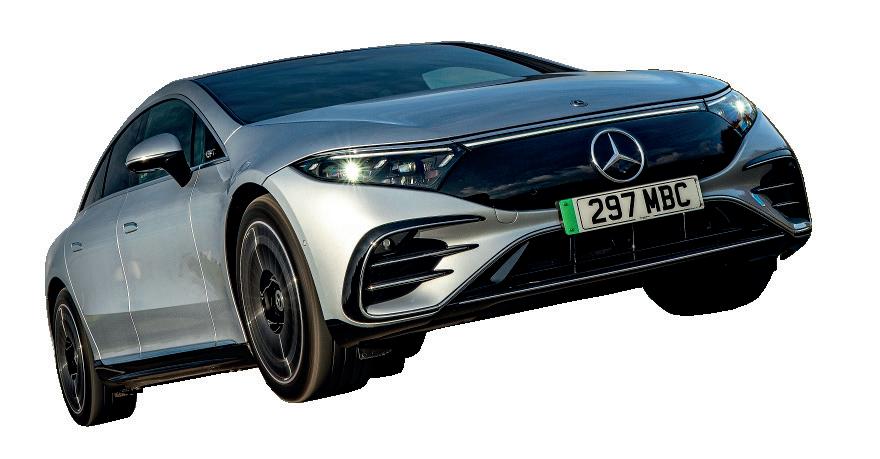
PLUS THE TOP TEN LONGEST RANGE EVs IN THE UK FOR 2024 P28

+ THE RESULTS ARE IN! ALL ON PAGE 14
Enjoy

Whether it’s local deliveries or long-range journeys, we’re here to keep your drivers and your business powered up for the road ahead.





Allstar One Electric. Got yours yet? Allstar One
fast, rapid
ultra-rapid charging
or
on 98% of our network.
MONTH/YEAR DATE one electric
Electric
EDITOR’S NOTE
Welcome Matt!
Welcome to the March edition of Turning Electric and congratulations if you spotted that there’s been a bit of a change.
No, Charlie hasn’t grown a beard and aged about a decade, rather, I’ve taken over as editor of Turning Electric and EV Powered.
As a life-long car fan and lover of technology, I am thrilled to be joining EV Powered during such a fascinating time for the whole automotive industry and I’m looking forward to building and expanding on Charlie’s brilliant work.
2024 is shaping up to be a massive year for electric transport as we see a wealth of new vehicles go on sale and even more innovation in the worlds of batteries and charging. The UK’s ZEV mandate will undoubtedly have an impact on the shape of the market and there’s major manufacturing news too - see page 25 for more on that.
There’s also the ever-growing sphere of all-electric motorsport, which this year includes the E1 powerboat series alongside Formula E and Extreme E. All of which you can read about in this issue.
Personally, I’m most excited about the growing number of smaller, more affordable EVs hitting the roads. One of the criticisms levelled at electric cars in the past is that their up-front costs are too high. This year will definitely see that issue addressed. As you’ll read on page 5, Europe’s cheapest electric car - the Dacia Spring - will reach the UK this year, undercutting every other EV and most petrol-
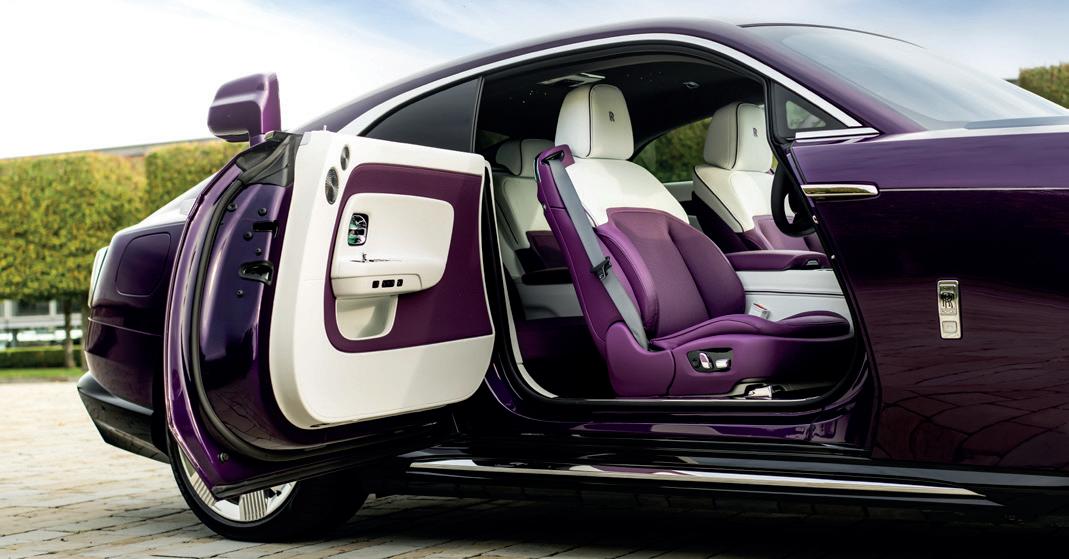




powered cars too. The sub-£25,000 Citroen e-C3 also promises to bring electric motoring to an even wider audience in 2024. Later this year we should see the production version of the compact Volkswagen ID.2 but, before that, EV Powered has been at the Geneva Motor Show to cover the unveiling of the new all-electric Renault 5, which you can read about on page 6.
While I’m excited for the rise of affordable EVs, there’s still something thrilling about those cars at the other end of the spectrum, so I was delighted this month to get behind the wheel of our cover star - the £350,000 Rolls-Royce Spectre. You can read all about how I got on with Goodwood’s first EV from page 8 onwards. This issue also brings you the full results of the inaugural EV Powered Awards. With so much going on in the EV landscape, we’re delighted to be celebrating the best in the business, from impressive vehicles to pioneering people. And, if that’s not enough, we’ve also got reviews of the sleek Skoda Enyaq Coupe and Tern Orox R14 e-bike, along with a breakdown of the EVs with the longest ranges.

I’m incredibly excited about what 2024 has in store for EVs and our title, and I am looking forward to keeping you, our brilliant readers, up to date with all the latest news, reviews and features.
3 TURNING ELECTRIC MAGAZINE
Thank you for your continued support and enjoy the read! Matt Allan Editor, Turning Electric The Turning Electric Team Editor Matt Allan Associate Editor Cherry Martin Graphic Designer Grace Moseley Videographer Jacob Pinchbeck Content Sales Manager Laura Phillips
Business Media,
MD Richard Alvin
Development Director
Director
Director Andrew
Turning Electric is published in London by © EV Powered Ltd a Capital Business Media group brand. Turning Electric is printed using sustainable paper sources and vegetable ink, and is PEFC certified. Copies are recycled at the end of each month. Capital Business Media Ltd, Level 18, 40th Floor, London, E14 5NR. Tel: 020 7148 3861
Capital
Group
Business
Stephen Banks Chief Creative
Stuart Hyde Finance
Martin



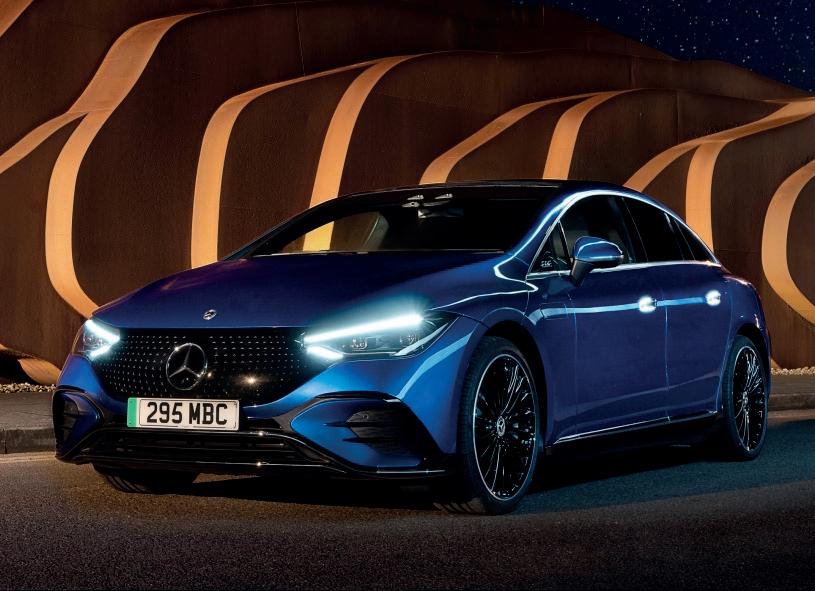
Contents 5 8 Rolls-Royce Spectre A full review of the first electric Rolls-Royce. 14 The EV Powered Awards Are Here! Celebrating and rewarding the best EVs of 2023. 20 Skoda Enyaq Coupe Another full review of the EV from the successful Czech brand. 22 Dennis & Cassidy On Top! All the latest news about the latest Formula E Season. 23 A Nail-biting Weekend in Jeddah All the latest news about the latest Extreme E Season. EV News The latest from the EV industry. 28 24 Team Brady Sweeps to Victory! The latest in the E1 Series opening round. 22 23 25 New £4B Gigafactory Confirmed for Somerset site. 26 E-Bike Advice: Navigating The Journey Exploring abroad with your electric bike. 27 E-Bike Review: Tern Orox R14 Redefining adventure and utility. TURNING ELECTRIC MAGAZINE 4 28 Longest Range EVs in the UK 2024 This month’s top ten is all about miles! 34 EV Charging Costs Up 11%... ...Since last year but still cheaper than petrol. 35 Better Range Labelling on Electric... ...Vans is critical adoption - Paul Hollick explains why. 38 Electric Home News The latest news and updates for everything Electric Home. 42 The Smart Home Energy Revolution A glimpse into the future of energy management. 8 44 Neighbour Pressure Home improvements are the biggest influence. 46 Harnessing the Sun Unleashing the power of residential solar energy storage. 48 Innovations in HVAC Technology Transforming home comfort and sustainability. 50 Why Renewable Energy... ...Self-consumption is key for self-build projects.
DACIA gives first glance of low-cost SPRING ELECTRIC CAR


Dacia has revealed the first details of the new Spring, which will become Britain’s cheapest electric car when it goes on sale later this year.
Set to cost less than £20,000, the second-generation Spring is the first in a wave of more affordable small EVs expected to arrive over the next two years. Dacia says it wants the Spring to make electric motoring accessible to a wider audience.
At just 3.7 metres long, the SUV-inspired Spring is an A-segment alternative to city cars like the Kia Picanto, but Dacia says it offers the carrying capacity of cars in a segment above. It’s also the only electric car on the market that weighs less than a tonne, tipping the scales at 984kg.
The new Spring takes design inspiration from the rugged new Duster, with chunky, squared-off lines, black plastic body cladding and a slightly raised ride height. Dacia says the simple design is about creating a robust look that’s easy and cheap to maintain.
Inside, the interior is completely new, with higher quality materials and components. All versions get a seven-inch customisable digital instrument display, with a 10-inch touchscreen available in top-spec trim. Like the Duster, the Spring features a ‘YouClip’ accessory system for mounting phones and storage bags. Despite its small footprint, the Spring has a class-leading boot capacity of 308 litres and an optional 35-litre storage space under the bonnet. With its focus on affordability, the Spring’s technical specifications are relatively low compared with most EVs but Dacia says data from the firstgeneration car shows they match users’ needs while keeping costs down.

Entry-level cars have a 44bhp motor, while a more powerful 64bhp option is available. Both versions use a 26.8kWh battery which will return up to 137 miles of range. Energy efficiency is an impressive 4.25 miles/kWh.
The Spring features 7kW AC and 30kW DC charging, which can take the battery from 20% to 80% in 45 minutes. For the first time, it also features bi-directional charging to power external devices.
Full pricing will be confirmed in March but it’s widely expected to cost between £16,000 and £18,000, making it the country’s cheapest full-size electric car.
Specifications are being kept simple, with three trims - Essential, Expression and Extreme. All cars come with cruise control, electric front windows, rear parking sensors, remote central locking, speed limiter and a Media Control system with USB port for connecting a smartphone that can be controlled via steering wheel buttons.
Expression adds manual air conditioning and larger wheels, at 15 inches, while Extreme trim steps up the rugged aesthetic and boosts equipment levels with the 10-inch screen, wireless phone mirroring, V2L charging and electric mirrors and rear windows.
The first-generation Spring has already been a hit in mainland Europe, where it has been on sale since 2021. In total it has sold more than 140,000 units worldwide since its launch.

5 EV NEWS
NEW 2024 RENAULT 5 revealed as 248-mile city car
The new Renault 5 has been fully unveiled for the first time, promising to add “sparkle” to the electric city car market.
The rival to the Fiat 500e and electric Mini Cooper is the first car built on Renault’s new AmpR allelectric platform, which will also underpin the Alpine A290, Renault 4 crossover and a new Nissan Micra.
It comes with a choice of two power outputs and two batteries, although only the higher-spec options will be available from launch.
The more powerful motor produces 148bhp and 181lb ft, which gives it a 0-62mph time of under 8 seconds. It is paired with a 52kWh battery that should give a range of up to 248 miles. As standard, there is 100kW charging, and the 5 will offer AC vehicle-to-load and vehicle-to-grid bidirectional charging.
After launch, a 118bhp motor will be made available with a 40kWh battery equipped with 80kW charging and a range of 186 miles.
The 5 is designed to be a true city car. At just 3.92m long, it’s 9cm shorter than the Clio but thanks to short body overhangs and the skateboard-floor platform, Renault says it offers “generous” interior proportions and a 326-litre boot. There’s even an optional baguette holder.
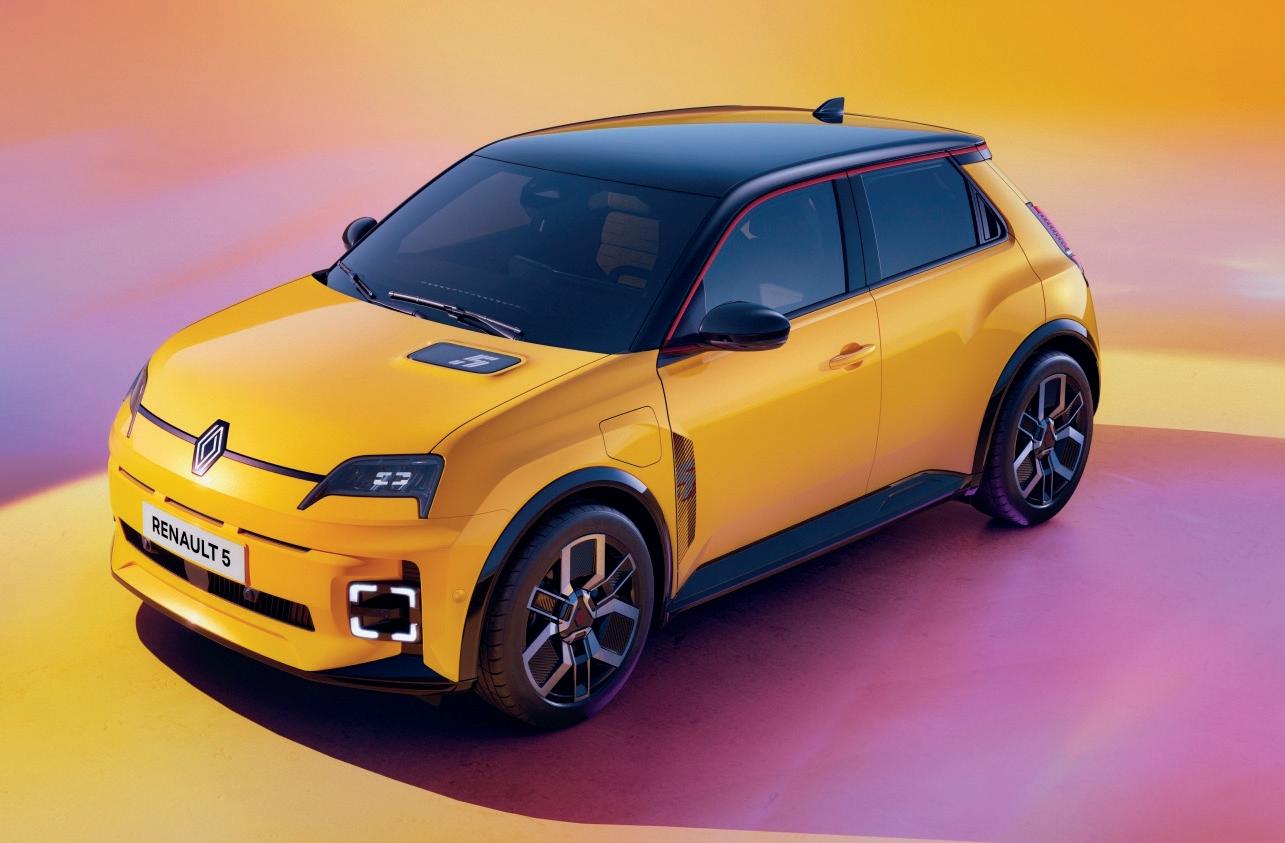
The five-door hatch’s design sticks remarkably close to the 2021 concept car. Renault is keen to make a big deal of its connections to the original 5 – from the rounded-square shape of the bumpermounted foglights, which are copied from the Renault 5 Turbo, to the squared-off wheel arch tops that echo the original car’s shape. Even the bonnet vent grille has been retained but now acts as a charge indicator which lights up the number 5 as the driver approaches.
The interior is a truly 21st-century arrangement but with nods to the original like the rounded rectangle shape of the instruments. Two 10-
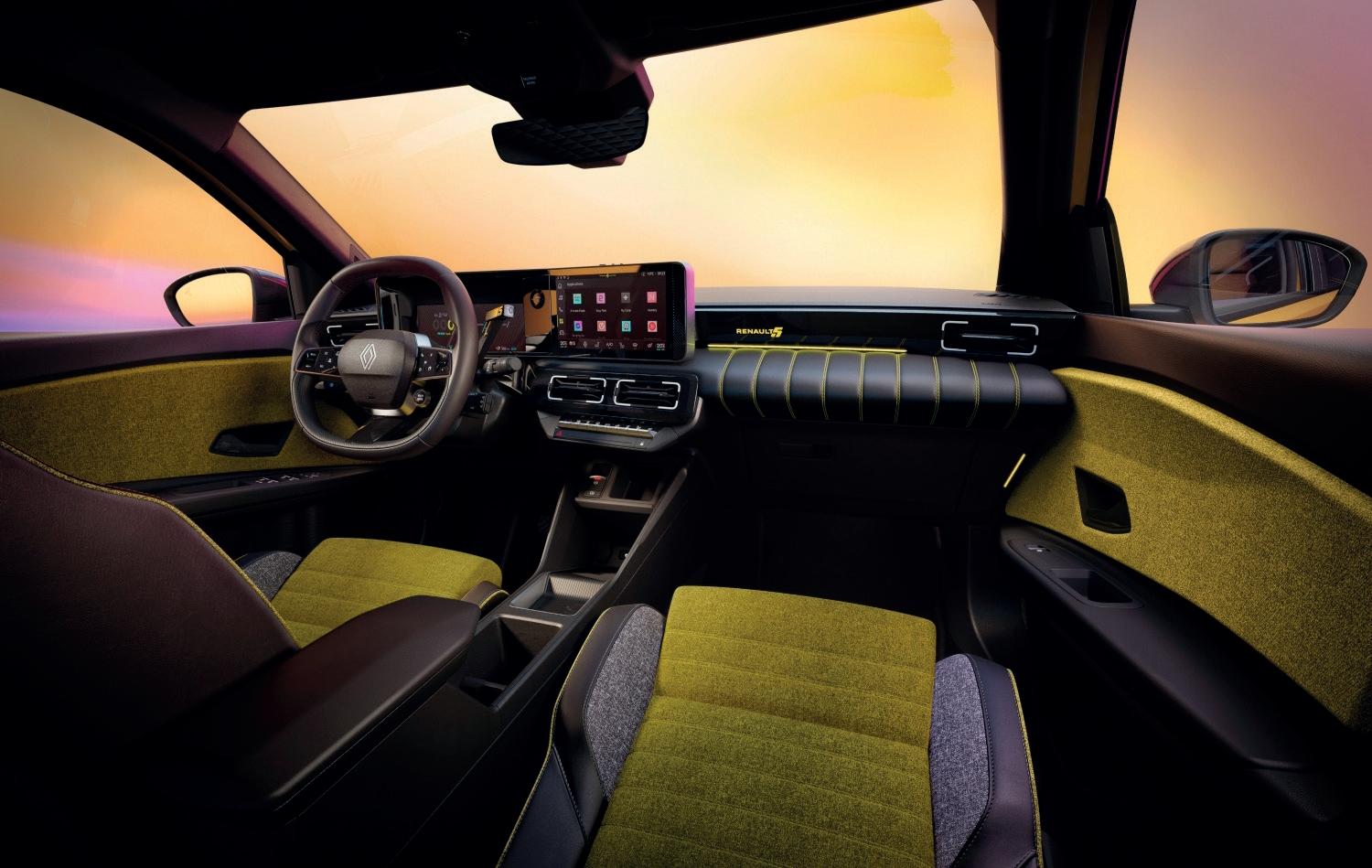
inch digital screens dominate the dash, one for instruments, the other the multimedia system. The 5 also introduces Reno, a virtual assistant intended to help drivers learn more about their car and use it more effectively.
Some trim levels get denim upholstery made from recycled plastic bottles, while others use 100% recycled fabric for their vivid material finish. All versions get padded and stitched dashboard finishes in the same material as the seats. To keep things quiet in the cabin, Renault has applied the latest soundproofing from the Megane and Scenic E-Tech and fitted acoustic glass as standard.
Full specifications will be revealed later this year but there will be two initial trim levels - Techno and Iconic Five. All versions of the 5 will get keyless entry and start, wireless smartphone mirroring and charging, 18-inch alloys, a 10-inch infotainment screen and LED headlights with auto high beam. The Iconic Five adds heated seats and steering wheel along with hands-free parking and other design features.
Customer deliveries will begin in the first quarter of 2025, with pricing due to be announced in the coming months but rumoured to be around £25,000. Buyers can’t order a Renault 5 yet but a £150 “R-Pass” will give them access to orders 10 days earlier than other drivers.
EV NEWS 6
VAUXHALL offers new customers a year’s free public charging
Vauxhall is offering a year’s free public charging to new customers as part of a deal with supermarket chain Tesco.

Under the new partnership, anyone buying a new electric model from Vauxhall will get up to 5,900 miles of free charging credit at Tesco stores across the UK.
Tesco has more than 2,700 Pod Point bays at 619 stores, offering charging rates of between 7kW and 75kW. As part of the deal, they will be rebranded to carry Vauhall and Tesco branding. While new Vauxhall owners will be able to use them for free, they will still be available to the owners of any EV. James Taylor, managing director of Vauxhall, said: “As electric vehicle sales continue to grow, access to practical charging continues to be a hot topic.
“We’re committed to electrifying Britain and helping UK motorists to make the switch to electric. We are excited to begin working with Tesco and look forward to seeing the UK’s charging network grow, allowing even more convenient charging solutions.”
VOLKSWAGEN ID.7 TOURER is a high-end estate with 426-mile range
Volkswagen has shared the first images and details of its first electric estate car, the new ID.7 Tourer.
The Tourer is exactly the same length, width and height as the ID.7 fastback but the elongated roofline and more vertical tailgate create an extra 73 litres of space, taking capacity to 605 litres.
Based on VW’s MEB platform, the Tourer is being offered in two specifications - Tourer Pro and
Tourer Pro S. Both use a single 282bhp motor with 402lb ft of torque. The Tourer uses the existing 77kWh battery while the Pro S introduces a new 86kW battery. Volkswagen says this will boost the ID.7 Tourer’s maximum range to 426 miles and increase maximum charging from 175kW to 200kW. This should allow a 10-80% charge in “significantly less” than 30 minutes in conjunction with battery preconditioning.
VW is still to announce pricing or a UK launch date but we’d expect sales to begin by the summer with prices in the region of £55,000.
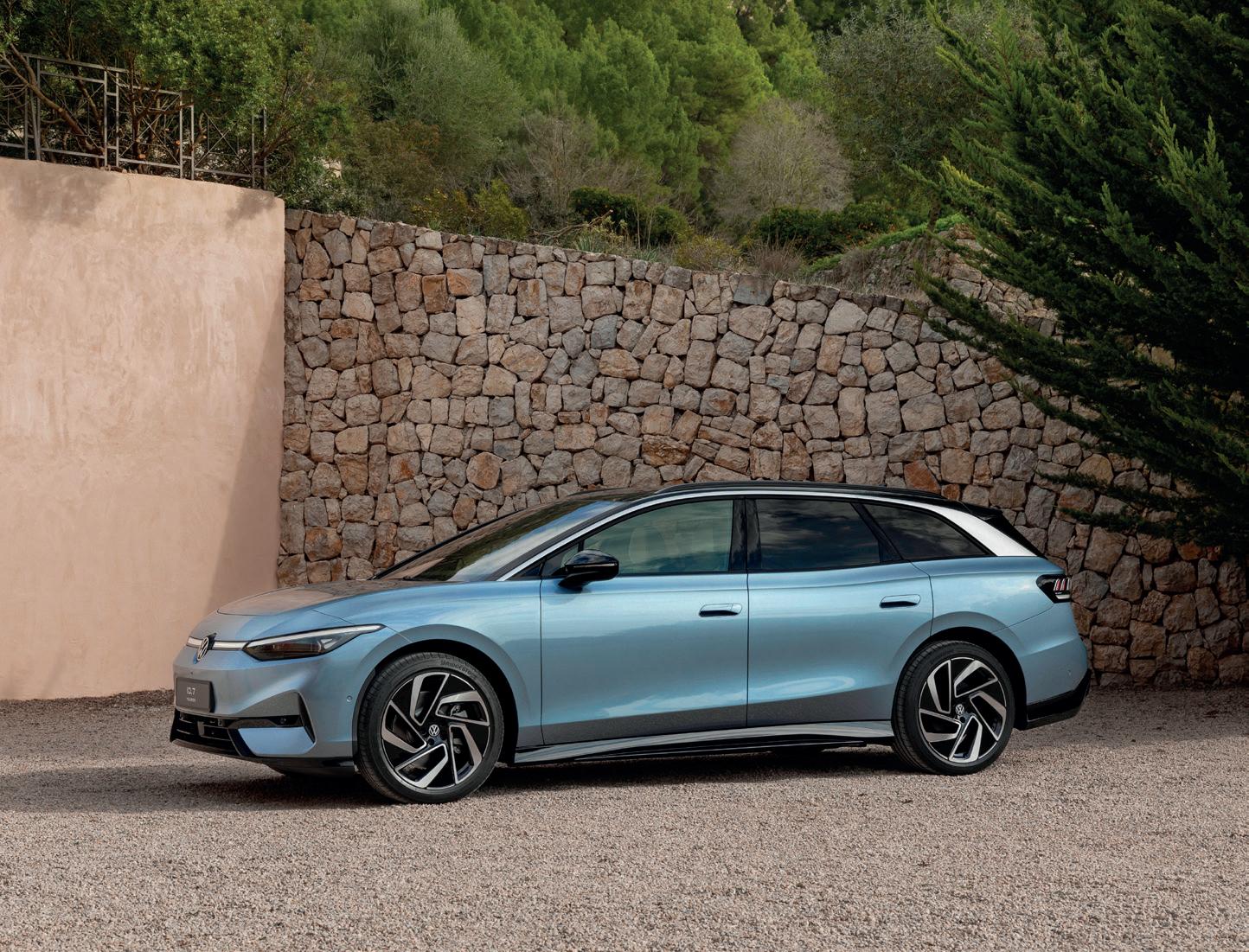
NEWS IN BRIEF
Cupra has added a more powerful model to its all-electric Born range. The Cupra Born VZ brings 322bhp and a 0-62mph time of just 5.7 seconds. It also features chassis upgrades for a more dynamic drive and visual updates.
The Renault Scenic E-Tech has been named European Car of the Year 2024. The electric SUV beat the BMW 5 Series, BYD Seal, Kia EV9, Peugeot E-3008/3008, Toyota C-HR, and Volvo EX30 to take the title.
MG has confirmed performance figures for the Cyberster. Entry-level cars use a single motor producing 335bhp and giving a 0-62mph time of 5.2 seconds. A dual-motor model offers 537bhp and 0-62mph in 3.2 seconds.
Used EV sales almost doubled in 2023. Data shows sales of secondhand EVs have soared 90.9%, to a record 118,973 units. Electric cars now represent 1.6% of the used car market - up from 0.9% in 2022.
Vauxhall has cut the price of the Corsa Electric by £5,500. A new entry-level Yes specification with 134bhp and a 50kWh battery brings the starting price to £26,895.
7 EV NEWS
SPECTRE
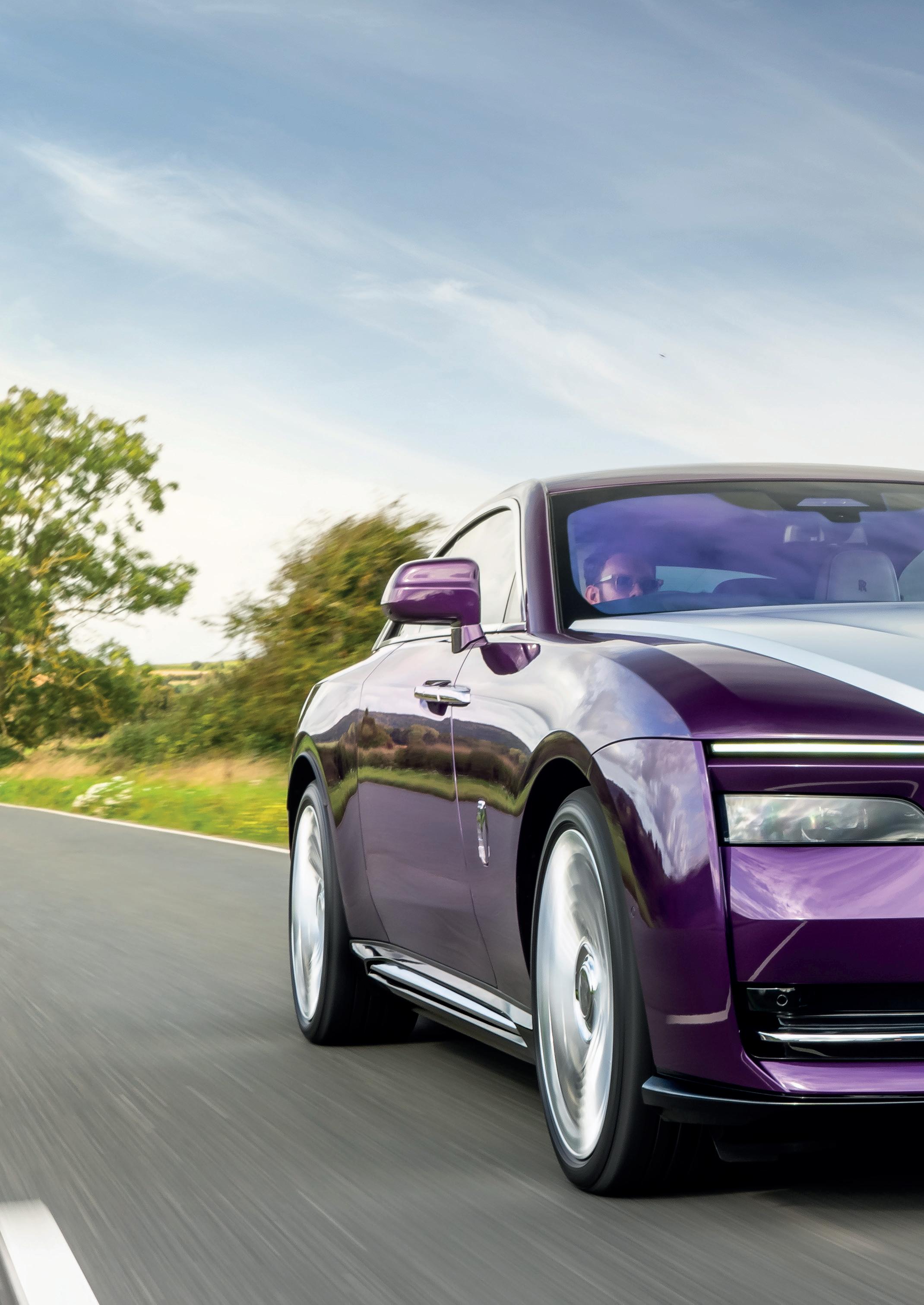

SPECTRE
MORE THAN 100 YEARS AFTER CHARLES ROLLS HAILED THE PROMISE OF THE ELECTRIC CAR WE TAKE THE WHEEL OF ROLLSROYCE’S FIRST EV TO SEE IF IT LIVES UP TO HIS PREDICTIONS.
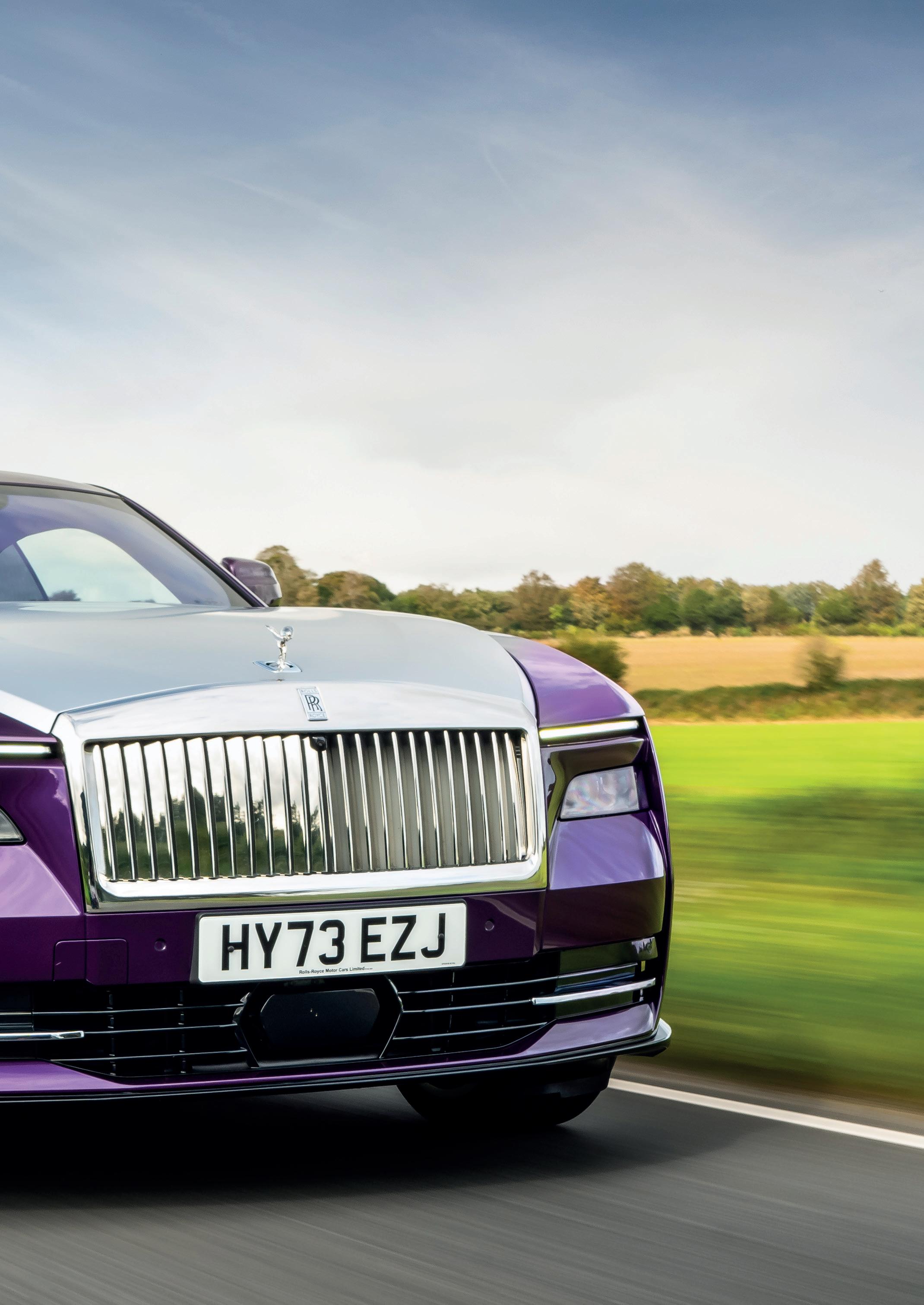

In 1900 Charles Rolls declared that electric power was the perfect solution for the automobile.
In a magazine article written four years before he began collaborating with Henry Royce, Rolls said: “The electric car is perfectly noiseless and clean. There is no smell or vibration. They should become very useful when fixed charging stations can be arranged.”
Well, it may have taken more than 100 years but the marque that bears Rolls’s name has finally embraced his vision and built its first electric car, with plans to be all-electric by 2030.
The brand insists that the Spectre is a “RollsRoyce first, and an electric car second” but, frankly, the two are so well suited to each other that it’s a moot point. The silent and smooth progress offered by electric power couldn’t find a better partner than the purveyor of some of the world’s quietest, smoothest cars.
The Spectre is based on the same scalable architecture as the Ghost and Cullinan, which was developed with future electric powertrains in mind. That means there are no compromises in space or packaging to accommodate the massive 102kWh battery or front and rear motors. The battery is incorporated between the sills, giving a completely flat floor and adding structural rigidity, while the rest of the car has been designed with one eye on creating luxurious space and another on maximising efficiency.
The Spectre is the most aerodynamic RollsRoyce ever and its shape has borrowed from the simple, smooth lines of racing yachts in pursuit of better energy efficiency. Odd as it sounds, the 5.5-metre long Spectre embraces the idea of less is more in its styling. Yes, there’s the giant illuminated Pantheon grille, topped by a new, more aerodynamic Spirit of Ecstacy. And yes, the bonnet is as long as a football field. But the car’s lines are simple and clean, with no unnecessary embellishments. And it exhibits a classic RollsRoyce shape that flows from the vertical bow line and split headlights right back to the seamless tail, which sweeps in and up to aid air flow.
Cleverly, the Spectre features a glossy black “plinth” beneath the doors, which adds definition to the massive flanks and hides the deep floor containing the battery, while the body panels tuck into the underside of the car to reduce its visual bulk.
In developing the car, Rolls-Royce dug into how its customers would use it and says it has exceeded their expectations with a WLTP range of 329 miles. In the real world, that translates to a reliable 250-260 miles between charges. Those
THE SPECTRE IS THE MOST AERODYNAMIC ROLLS-ROYCE EVER AND ITS SHAPE HAS BORROWED FROM THE SIMPLE, SMOOTH LINES OF RACING YACHTS IN PURSUIT OF BETTER ENERGY EFFICIENCY.
“
”





can be taken care of at up to 195kW, taking the Spectre from 10-80% in 34 minutes.
The massive battery provides power to two motors - a 190kW unit at the front and 360kW at the rear. Combined, these provide 577bhp and 664lb ft, and bring new levels of refinement and urgency to an already impressive line-up.
No-one has ever accused Rolls-Royce’s mighty 6.75-litre V12 of being noisy but at full throttle, a Ghost or Cullinan has a distant but distinct bellow. Not so in the Spectre. It delivers even more startling pace than a Ghost Black Badge - 0-62mph in 4.5 seconds - but does so in almost complete silence. Push up to motorway speeds and there’s a whisper of wind noise around the wing mirrors but nothing that could be classed as intrusive.
If you want a little aural drama, you can engage Rolls-Royce sound - a synthesised “engine” tone. At lower speeds and part throttle this creates an almost musical note like a rising choral voice. At fuller throttle, this is overlaid with an almost mechanical rumble that’s evocative but never overbearing.
Whether you turn that on or off, there’s no doubting the potency of this powertrain. A heavy right foot will pin you and your passengers back in the luxuriously upholstered seats as the motors direct their energy to all four wheels. At any speed there is an instant response from the throttle but one that’s beautifully modulated so it’s never harsh. The pace is impressive enough for a near three-tonne vehicle and you could cross Europe on the autoroutes and autobahn at huge speeds in virtual silence. But what is truly remarkable about the Spectre is how well it copes on smaller roads and even urban environments. Thanks to the genius of four-wheel-steering, this 5.5-metre long, 2m wide coupe feels no more unwieldy than a mid-size SUV. Don’t get me wrong, this is no sports car and you’re aware of its width on narrow roads. But the willingness with which the back end tucks around corners is startling. There’s a responsiveness and neatness to the Spectre’s handling that means it can be threaded along a rural B-road with impressive ease and accuracy.
Continue onto next page
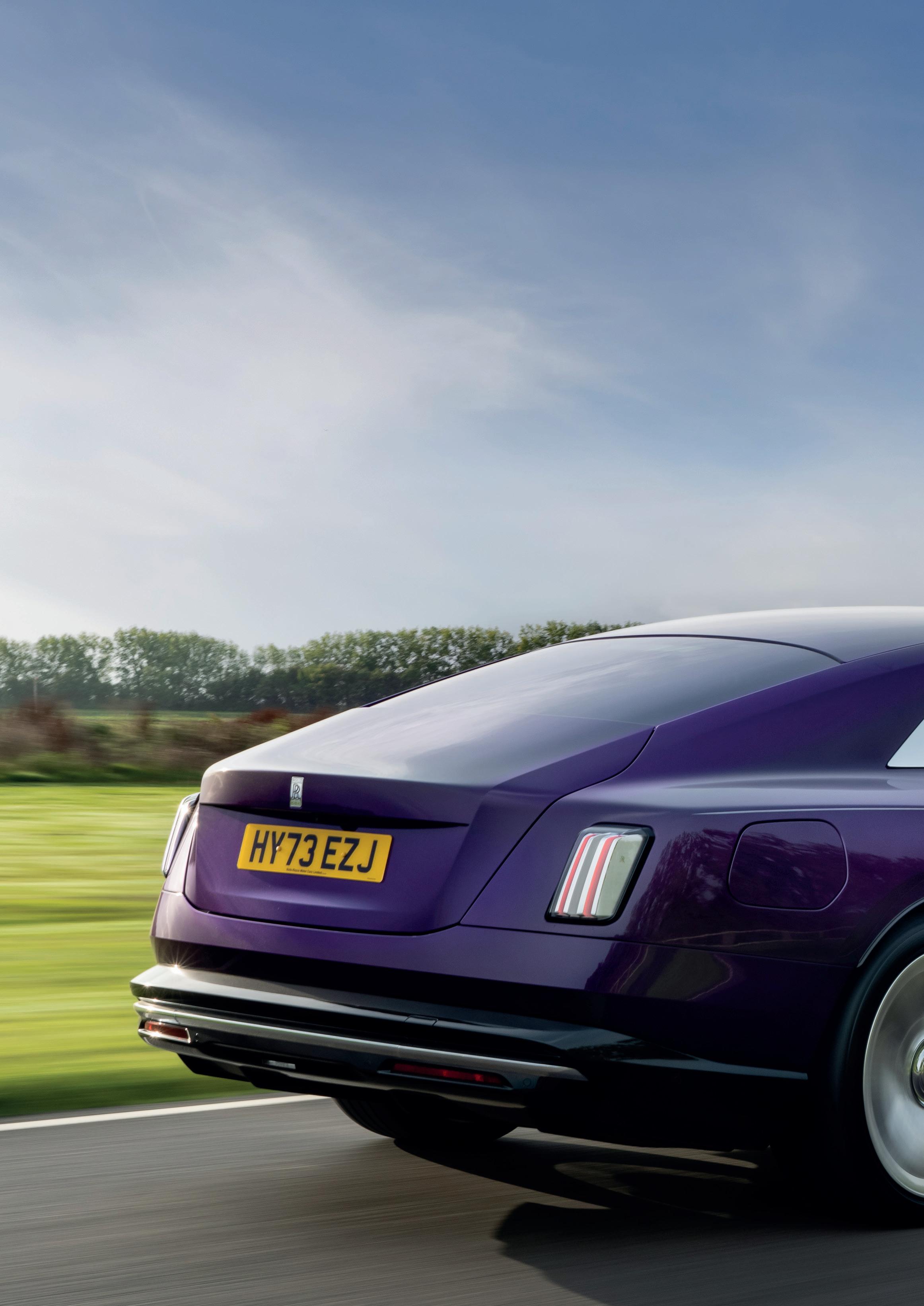
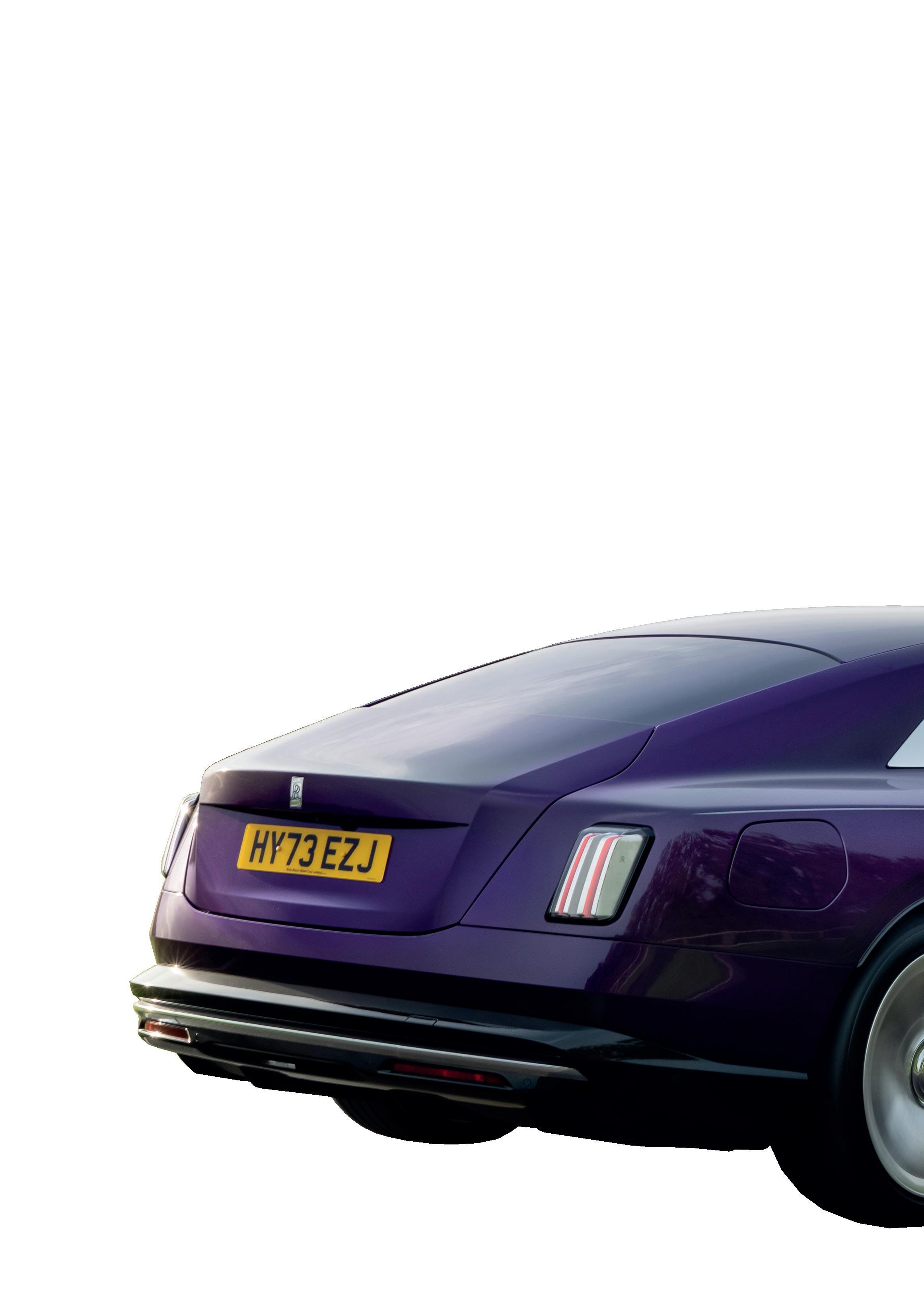
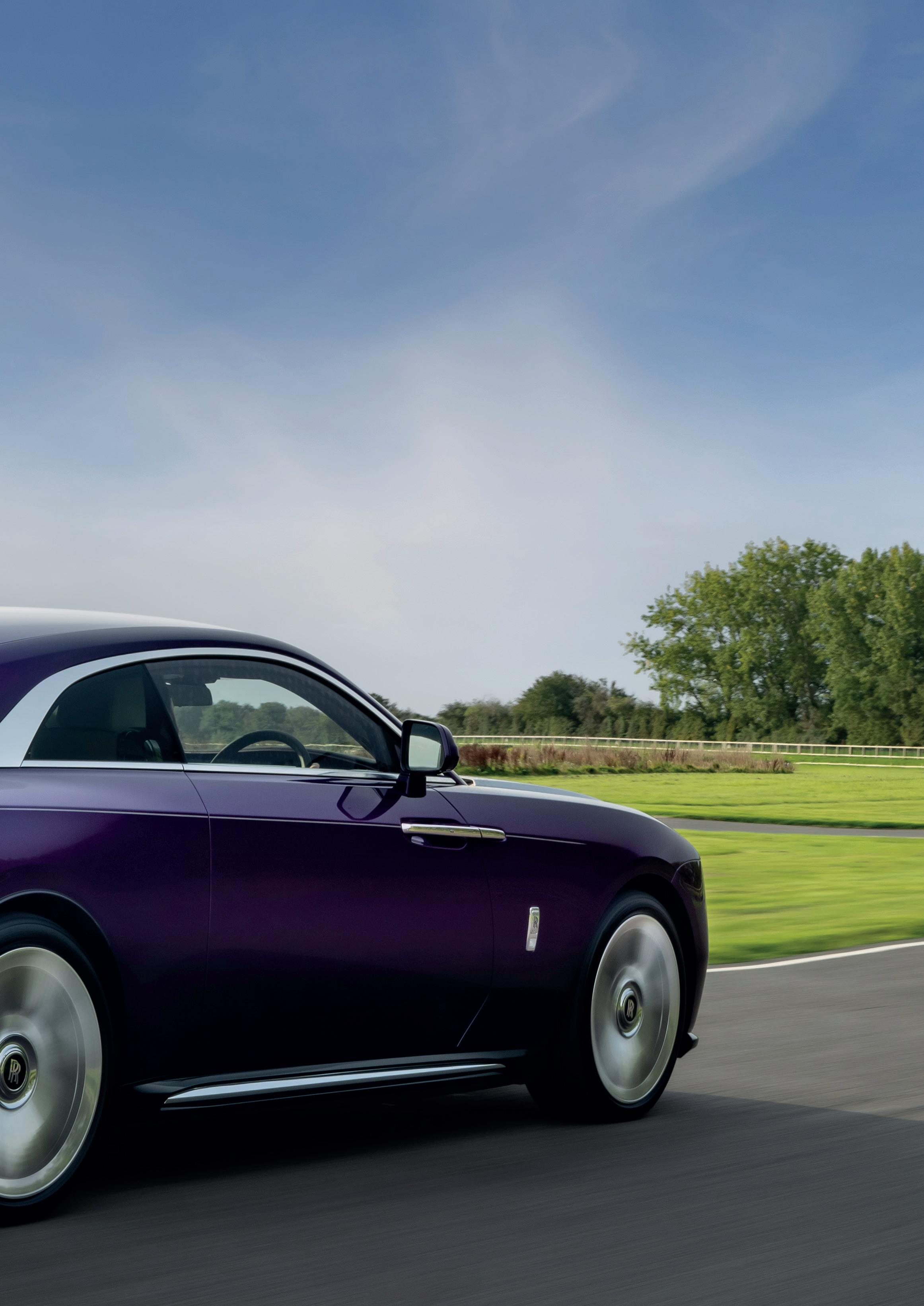
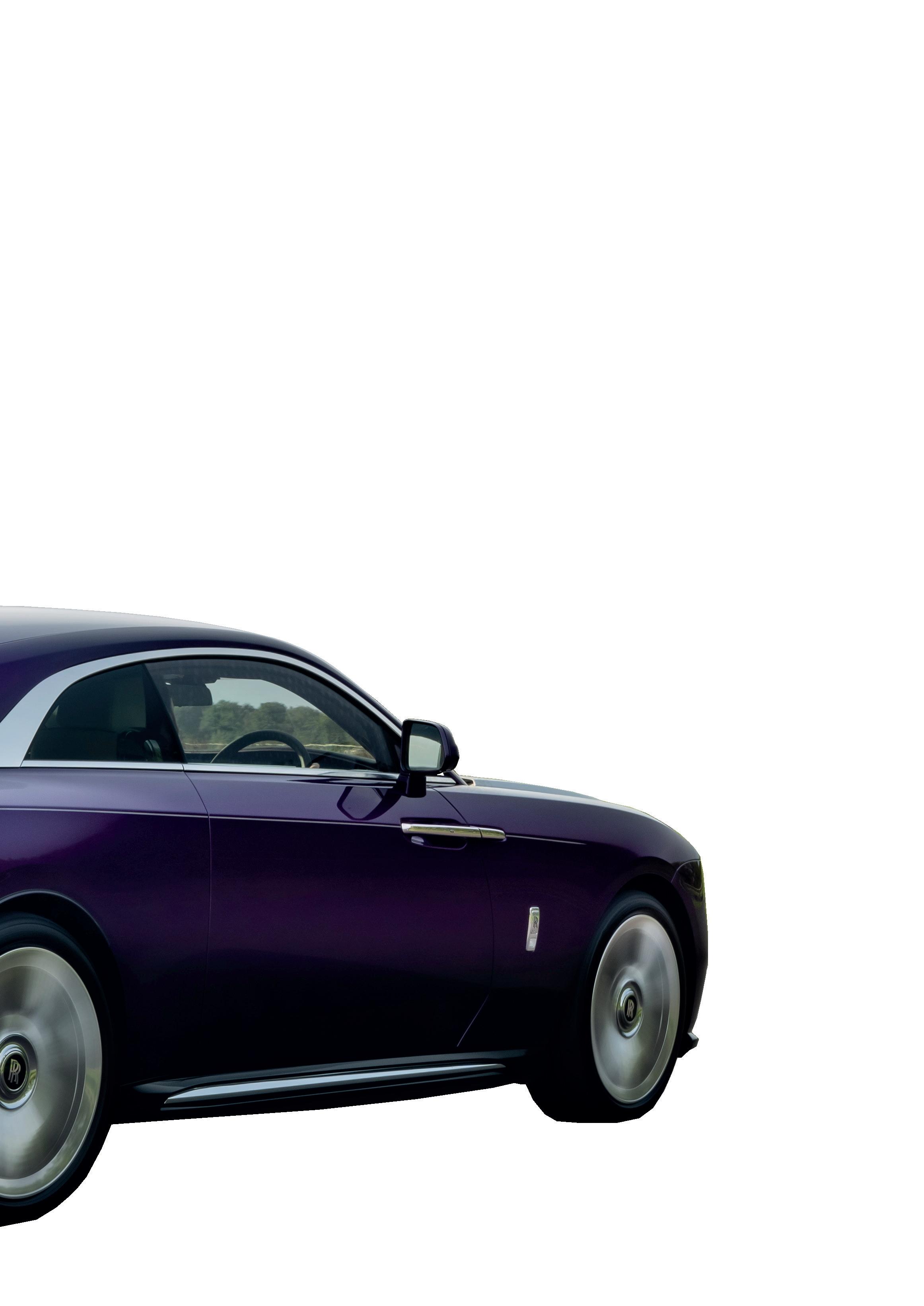
THE

ARE HERE!
Celebrating and rewarding the best electric vehicles of 2023
As the automotive landscape shifts towards electrification, we are proud to launch the inaugural EV Powered Awards. Over the next few pages we will be celebrating innovation, performance, and sustainability in the realm of electric vehicles. From whisper-quiet luxury cruisers to lightning-fast sports cars, with some zippy city cars thrown in for good measure. The EV Powered Awards recognise the trailblazers pushing boundaries and reshaping the future of mobility. Our panel of judges has meticulously sifted through the contenders to crown the champions.
EV POWERED AWARDS 14
FINALISTS
THE BEST CITY CAR AWARD



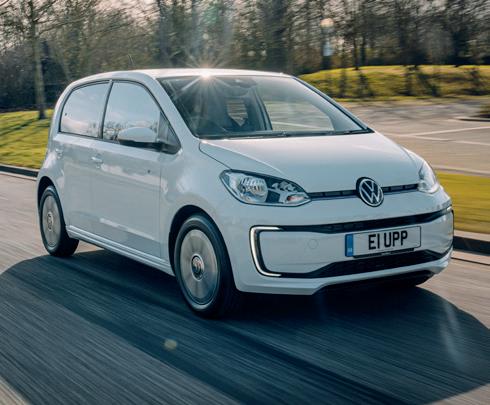
WINNER

THE BEST SMALL CAR AWARD
FINALISTS

PEUGEOT E-208
WINNER

VAUXHALL CORSA ELECTRIC MG4 EV VW ID3
MG4 EV


The MG4 EV secured ‘Best Small Car’ in the EV Powered
for its exceptional combination of compact size, efficient electric powertrain, advanced technology features, and impressive driving dynamics, making it a top choice in its category.
THE ELECTRIC FAMILY CAR AWARD
FINALISTS

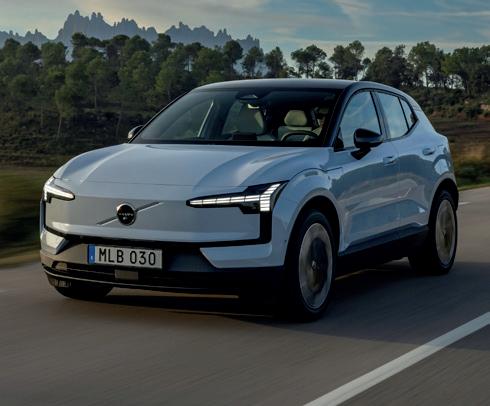

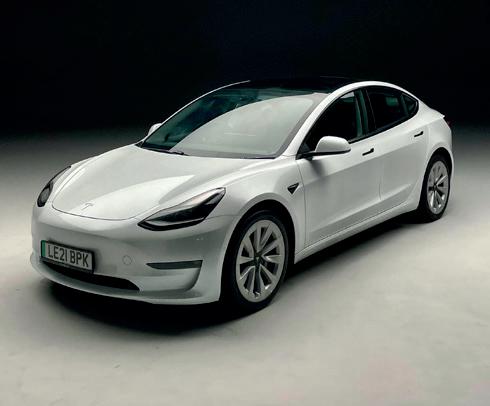
WINNER
The Citroen Ami clinched ‘Best City Car’ in the EV Powered awards for its compact design, agile manoeuvrability, emission-free performance, and innovative urban-centric features, making it the ideal electric vehicle for urban commuting.
CITROEN AMI FIAT 500E CITROEN AMI ELECTRIC MINI VW E-UP
awards
The Tesla Model 3 secured ‘Best Family Car’ in the EV Powered awards for its spacious interior, long-range capability, advanced safety features, and exceptional performance, making it the ideal choice for families seeking electric luxury and practicality.
TESLA MODEL 3 POLESTAR 2 VOLVO EX30 SKODA ENYAQ TESLA MODEL 3
THE BEST PREMIUM ELECTRIC CAR AWARD
FINALISTS

PORSCHE TAYCAN MERCEDES EQS


LUCID AIR BMWi7

WINNER
MERCEDES EQS

The Mercedes EGS claimed ‘Best Premium Car of the Year’ in the EV Powered awards for its luxurious design, innovative electric powertrain, advanced technology features, and unparalleled driving comfort, setting a new standard for excellence in premium electric vehicles.
THE BEST ELECTRIC SUV CAR AWARD
FINALISTS

AUDI Q8
WINNER

MERCEDES EQA
KIA NIRO EV

KIA NIRO EV

HYUNDAI IONIQ 5
The Kia E Niro EV triumphed as ‘Best Electric SUV of the Year’ for its outstanding combination of long-range capability, practicality, advanced features, and overall value, setting a new standard in the electric SUV category.
THE BUNDLE OF FUN AWARD
FINALISTS

CARVER MOKE PURE E-SCOOTERS
WINNER


The Moke snagged the ‘Bundle of Fun Award’ for its iconic design, retro charm, open-air driving experience, and spirited performance, epitomizing sheer joy and excitement on the road.
MOKE
THE EV CHALLENGER BRAND AWARD
FINALISTS

POLESTAR
WINNER
BYD NIO
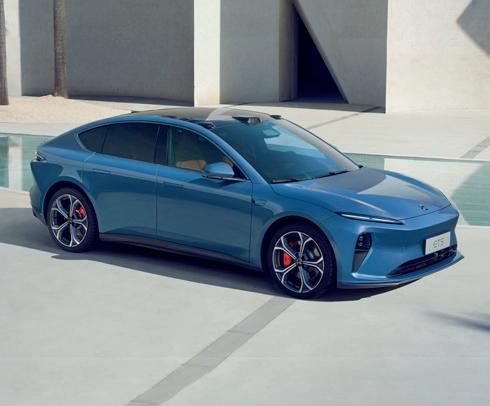

BYD FISKER
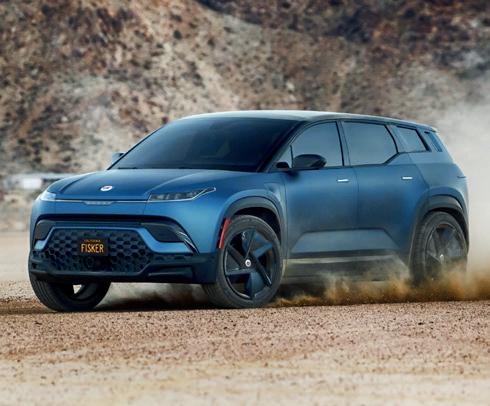
BYD clinched the ‘Bundle the EV Challenger Brand Award’ for its commitment to innovation, affordability, and widespread accessibility, propelling the electric vehicle market forward as a formidable challenger brand.
THE BEST CAR REPOWERING COMPANY AWARD
FINALISTS

ELECTROGENIC LUNAZ


SILENT CLASSICS EVERATI

WINNER
LUNAZ

Lunaz claimed the ‘Best Repowering Car Company of the Year’ award for its pioneering efforts in transforming classic cars into high-performance electric vehicles, blending heritage with sustainability and innovation.
THE BEST COMMERCIAL EV AWARD
FINALISTS
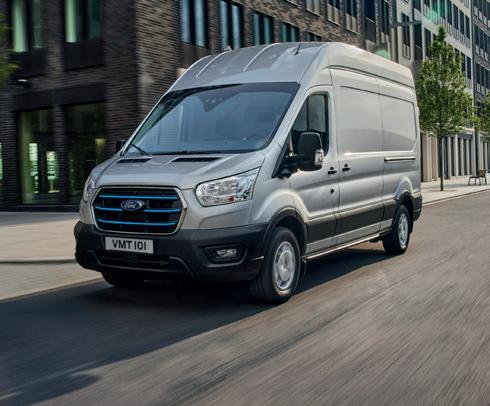
ELECTRIC FORD TRANSIT
WINNER

VW BUZZ CARGO

VAUXHALL VIVARO-E CITROEN

VW Buzz Cargo secured the ‘Best Commercial EV of the Year’ for its innovative design, spacious cargo capacity, efficient electric powertrain, and advanced technology features, redefining sustainability in commercial transportation.
VW BUZZ CARGO
THE BEST LAST-MILE DELIVERY SOLUTION COMPANY AWARD
FINALISTS
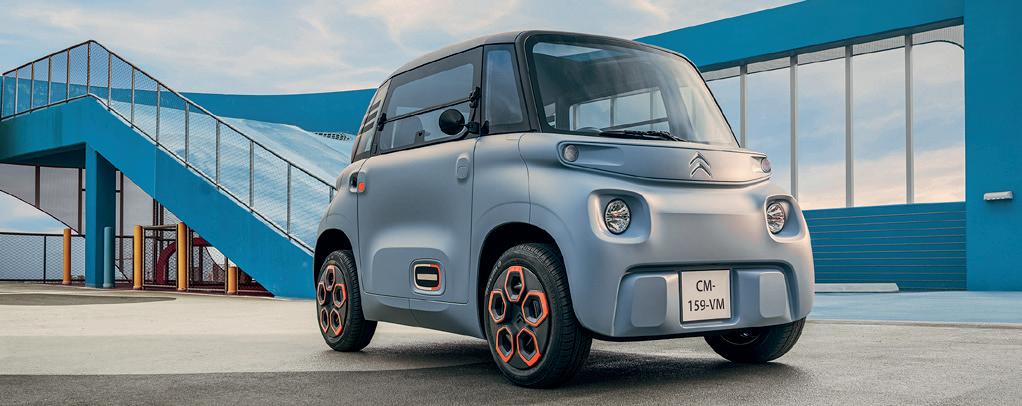
CITROEN AMI CARGO
WINNER
ELECTRIC ASSISTED VEHICLES (EAV)

ELECTRIC ASSISTED VEHICLES (EAV)
AEV secured the ‘Best Last-Mile Delivery Company of the Year’ for its commitment to efficient electric delivery solutions, reducing emissions and congestion while ensuring timely and sustainable urban logistics.
THE BEST COMMERCIAL VEHICLE REPOWERING COMPANY AWARD
FINALISTS

LUNAZ EQUIPMAKE
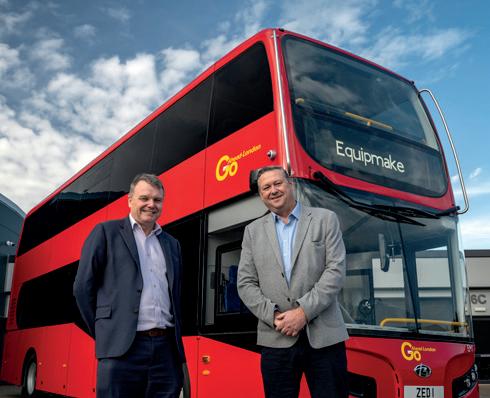

KLEANBUS MAGTEC

WINNER
EQUIPMAKE

Equipmake secured the ‘Best Commercial Repowering Company’ award for its exceptional expertise in retrofitting commercial vehicles with electric powertrains, spearheading the transition to sustainable transportation solutions in the commercial sector.
THE BEST CHARGING NETWORK AWARD
FINALISTS
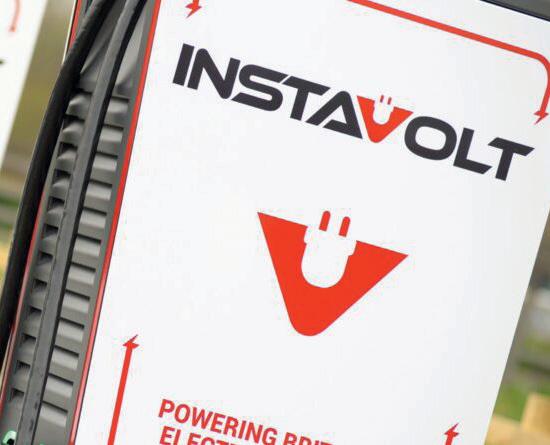
INSTAVOLT IONITY
WINNER
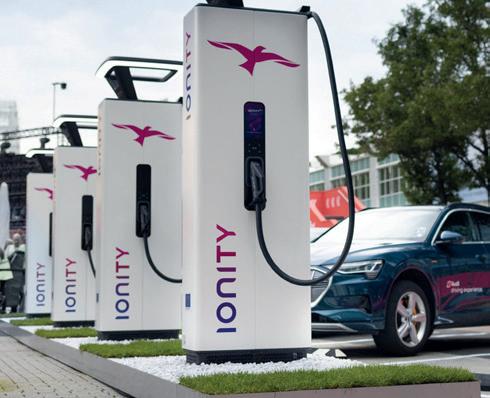

TESLA OSPREY
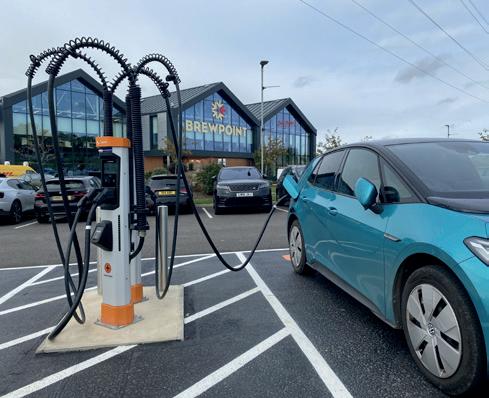
Tesla secured ‘Best Charging Network’ for its expansive Supercharger network, offering unparalleled coverage, reliability, and speed, facilitating convenient and efficient charging experiences for Tesla owners worldwide.
TESLA
THE EV INNOVATION AWARD
FINALISTS
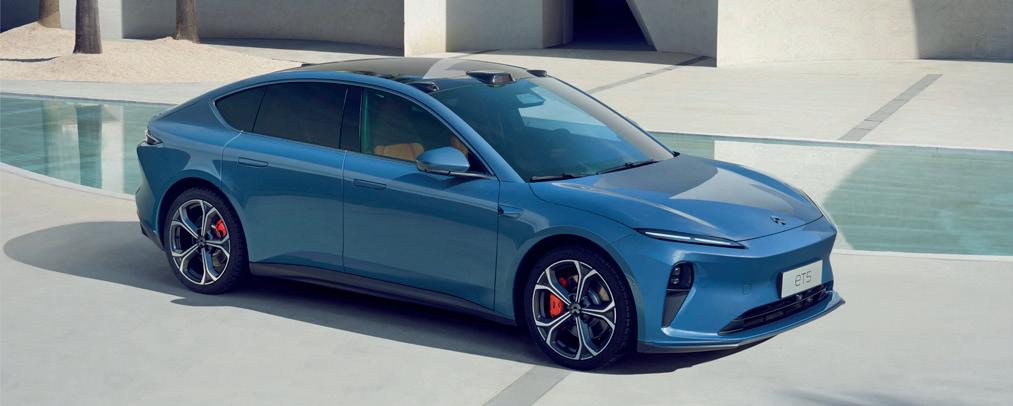
WINNER
FISKER

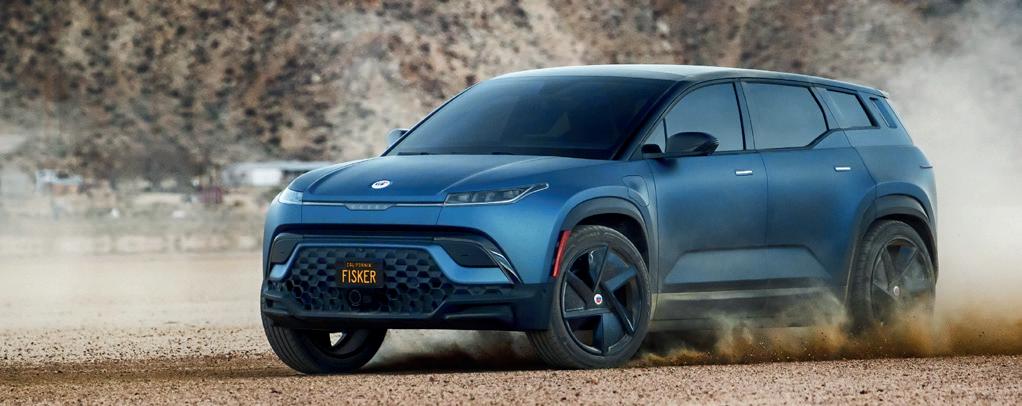
Fisker secured the ‘EV Innovation’ award its groundbreaking advancements in electric vehicle technology, including solid-state battery development and sustainable materials, showcasing a visionary approach to sustainable mobility.
EV POWERED SPARK AWARD FOR OUTSTANDING ACHIEVEMENT
FINALISTS





WINNER
ALEJANDRO AGAG FOUNDER, FORMULA E, EXTREME E, E1 (BOAT RACING SERIES)
Alejandro Agag clinched the EV Powered Spark Award for Outstanding Achievement for his visionary leadership in advancing electric mobility through Formula E and Extreme E, catalyzing global awareness and adoption of sustainable transportation.
NIO FISKER
JORDAN BROMPTON COO, MYENERGI
MEL SHUFFLEBOTHAM COO, ZAP MAP
QUENTIN WILSON MOTORING JOURNALIST
ALEJANDRO AGAG FOUNDER, FORMULA E, EXTREME E, E1
ELON MUSK FOUNDER, TESLA
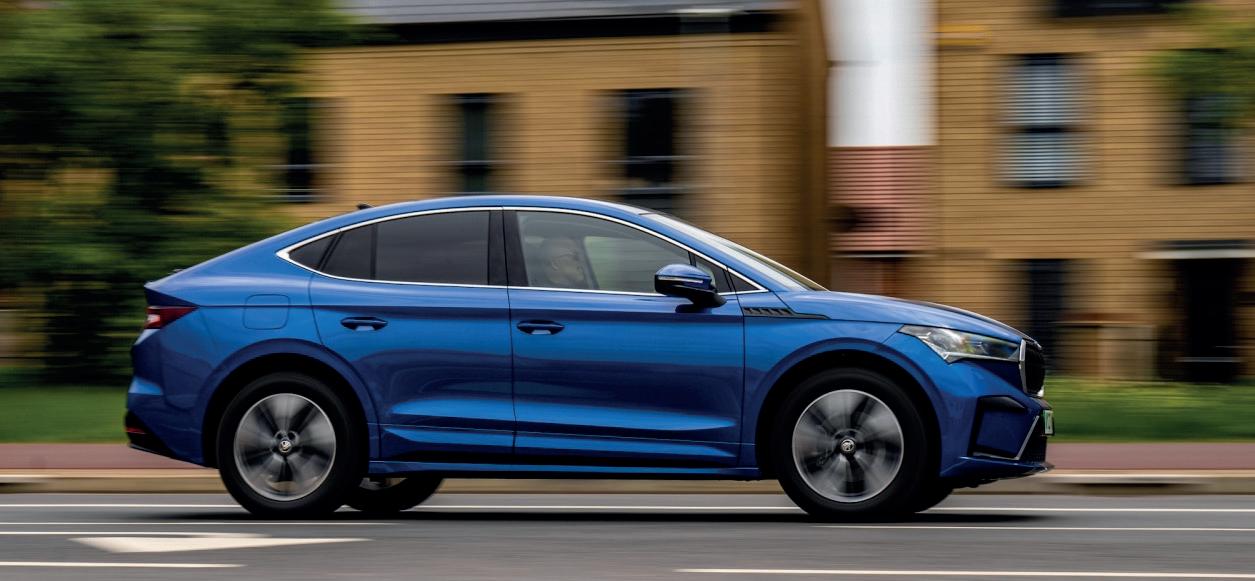

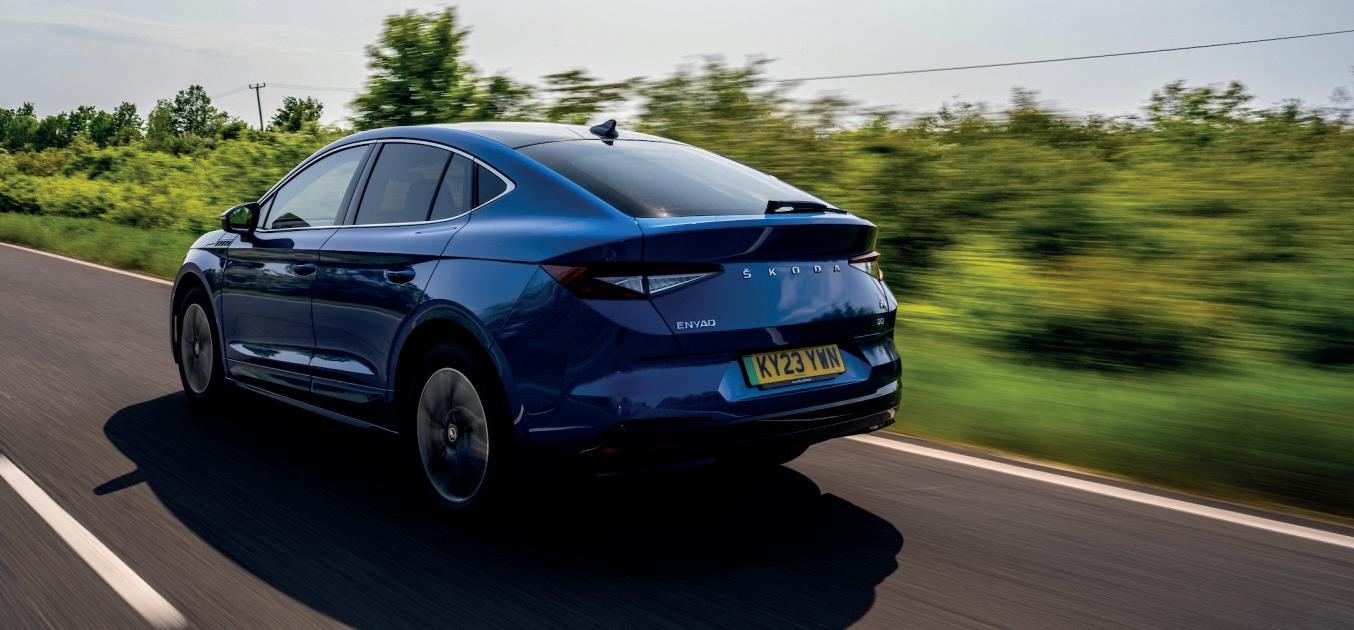

SKODA ENYAQ COUPE

The Skoda Enyaq has been a massive success for the Czech brand.
The firm’s first EV was an immediate hit thanks to the SUV’s blend of practicality and value. But that wasn’t enough for Skoda. It wanted to score points for style too, hence the arrival in 2022 of the Enyaq Coupe.
In the spirit of coupe-SUVs everywhere, this model has taken the basic components of the Enyaq and draped a sleeker, sportier skin over the top. And the results are impressive.
The coupe’s fastback look, bigger wheels and lower stance work really well to create a more dynamic looking car. Its crisp lines and sharp details have a real appeal and do a great job of masking the car’s size. It’s a far better looking car, for instance, than the related Volkswagen ID.5. If you really want to draw attention to yourself, there’s an optional light-up grille but we’d suggest you steer well clear of that.
Although it hides its size well, once you climb inside the Enyaq Coupe, you’re presented with a remarkably spacious and practical cabin. Up front, there’s plenty of leg and head room for even the tallest driver and passenger, two capacious storage areas in the centre console and plenty of room in the door pockets. In the
ENYAQ

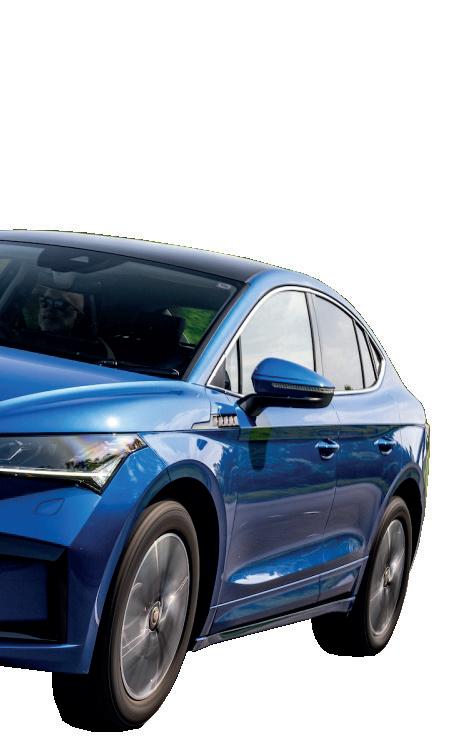
back, the diving roofline steals a little of the SUV’s headroom but even a couple of six-footers will fit comfortably beneath the giant fixed-pane glass roof. You’ll just about fit three adults across the rear bench but it will be a bit of a pinch.
Like the headroom, the boot space suffers in the pursuit of fashion, but only very slightly. The Enyaq Coupe’s boot offers 570 litres of capacity, compared with the SUV’s 585. Our own testing found that with some clever packing you can still squeeze in three 30kg+ wheelie cases, two cabin bags, a duffel and a rucksack. Unless you regularly travel five-up with weeks’ worth of luggage, you could probably manage with the marginal loss of practicality over the SUV.
The Enyaq Coupe’s interior design is a winner too, and again shows VW what can be done with this package. There’s a simplicity and clarity that creates a relaxing environment, boosted by premium looking and feeling materials. The low-slung dash is only interrupted by the 13-inch touchscreen and a neat envelope-like slot that houses a small digital instrument panel. This gives you the key information you need - speed, battery level and range, plus your trip computer and key ADAS systems - but doesn’t overload you with extraneous dials and digits.
While that’s great, the main touchscreen isn’t. Cursed with the VW Group’s appalling infotainment system, it’s a sluggish, over-complicated mess of menus and sub-menus where even basic functions require multiple stabs at the screen. It’s the biggest letdown in an otherwise impressive interior.
For 2024, the Enyaq Coupe’s drivetrain has been upgraded with more power and an improved range. The starting point of the range is the rear-wheel-drive Enyaq 85, which gets a substantial 81bhp power hike to 282bhp. That improves acceleration by a huge two seconds over the previous ‘80’ model and brings a welcome increase in all-round responsiveness. Output for the all-wheel-drive Enyaq 85x also increases to 282bhp - a more modest 20bhp rise. The outlandish Enyaq vRS, meanwhile, sees a 30bhp boost to 335bhp, knocking its 0-62mph time down from 6.5 to 5.5 seconds.
Although the battery size remains the same - at 77kWh usable - new cell chemistry and better thermal management mean the Enyaq Coupe’s range has also climbed. Single-motor cars can now cover up to 353 miles and be recharged at up to 135kW at a public charger. Four-wheel-drive versions, however, also get an improvement in charging, up to 175kW. That should allow for a 10-80% charge in just 28 minutes – eight minutes faster than before.
Welcome power boosts aside, the Enyaq is a pleasant but fairly unexciting car to drive. Everything feels stable and secure but there’s lots of electronic assistance and not much feedback. Given that this is a family SUV, that’s hardly the end of the world but the on-road dynamics don’t quite match the car’s looks, and there’s perhaps more tyre and wind noise than in some rivals.
One minor driving bugbear is that the “smart” regenerative braking isn’t that clever and never seems to have the right amount of bite for a situation. You can turn it off - buried four menus deep in the touchscreen - and use the steering column paddles instead. But the best solution, for urban driving at least, is to opt for the ‘B’ mode, which is as close to single-pedal driving as you’ll get.
While the regular Enyaq 60 starts at £38,970, the Coupe weighs in at £46,440 for a two-wheel drive 85. Partly you’re paying for the looks and partly you’re paying for the larger battery and motor of the ‘85’ model. Tick the all-wheeldrive option and you’re north of £50,000.
Equipment levels are decent, with heated seats, three-zone climate control and wireless phone charging as standard. That wonderful panoramic roof, a powered tailgate, Matrix LED headlights and adaptive cruise control are also fitted across the board, making it an attractive prospect even in the face of some well-equipped alternatives.
The Skoda Enyaq Coupe has no shortage of rivals and does well to make a case for itself, standing out particularly from its VW Group stablemates. It’s not quite as spacious or practical as some alternatives but has sharp styling and a classy interior to match its newly upgraded powertrains.


DENNIS & CASSIDY BOTH TAKE TO THE TOP STEP AS DIRIYAH CAME ALIVE FOR ROUNDS 2&3
The Formula E Season roared into action with Rounds 2 and 3 held in the electrifying setting of Diriyah, Saudi Arabia, delivering a spectacle of thrilling racing and strategic brilliance.
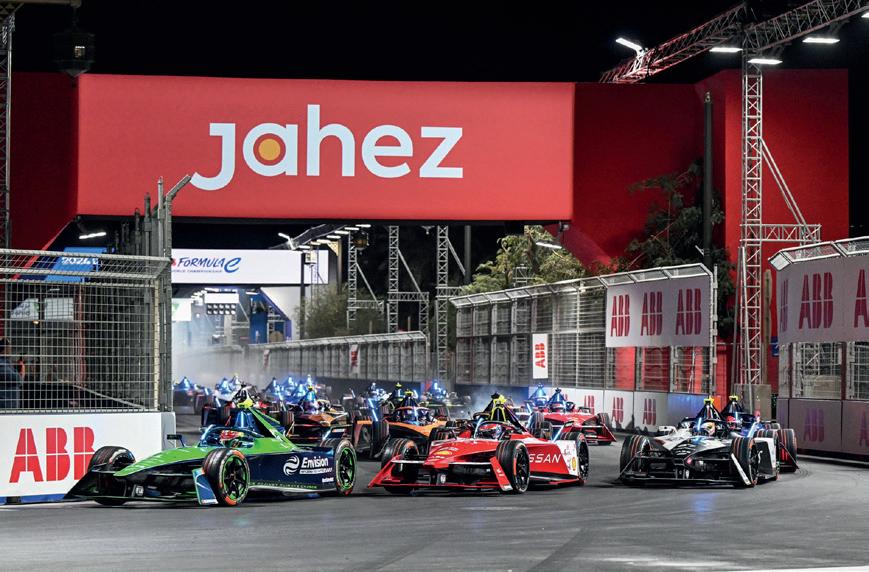

Reigning champion Jake Dennis, determined to bounce back from a disappointing start in the Mexico City season-opener, showcased his resilience and skill with a commanding win in Round 2. Storming to victory by a staggering margin of over 13 seconds under the illuminating lights of Diriyah, Dennis left no room for error after facing setbacks in Mexico City due to an uncharacteristic qualifying error. His strategic mastery, particularly in utilizing the ATTACK MODE, solidified his position at the front of the pack, outpacing pole-sitter Jean-Eric Vergne and the Jaguar TCS Racing duo of Mitch Evans and Nick Cassidy. In a dramatic last-lap maneuver, Evans relinquished second place to his teammate Cassidy, whose strategic prowess propelled Jaguar TCS Racing to the top of the Teams’ standings. Sam Bird of NEOM McLaren displayed his prowess with a notable fourth-place finish, while Norman Nato of Andretti and Maximilian Guenther of Maserati MSG Racing secured sixth and seventh positions respectively. Pascal Wehrlein of TAG Heuer Porsche, the Mexico City race winner, narrowly retained his lead in the Drivers’ World Championship standings.
In Round 3, Jaguar TCS Racing’s Nick Cassidy secured a historic first
win for the team of Season 10 with a measured drive. Amid pressure from Robin Frijns of Envision Racing and Oliver Rowland of Nissan, Cassidy maintained his composure and seized the lead at the opportune moment. His efficient utilization of the ATTACK MODE boosts and flawless execution allowed him to retain his advantage, clinching victory despite fierce competition.
Frijns returned to the podium after a hiatus, while Rowland achieved his first podium since Season 8. NEOM McLaren’s Jake Hughes impressed with a careerbest fourth-place finish, with Stoffel Vandoorne of DS PENSKE securing fifth position. Pascal Wehrlein fought his way to seventh place, extending his impressive scoring streak, while reigning champion Jake Dennis managed tenth after a challenging qualifying session.
With Cassidy now leading the Drivers’ World Championship standings and Jaguar TCS Racing holding a substantial advantage in the Teams’ table, the competition intensifies as Formula E heads to Round 4 in Sao Paulo on March 16th. The stage is set for more exhilarating action and intense battles on the track as the championship unfolds.
FORMULA E 22
01 03 NICK CASSIDY 02 FORMULA E 2023/2024 STANDINGS SO FAR PASCAL WEHRLEIN JEAN-ERIC VERGNE 33PTS 38PTS 57PTS
ROSBERG X RACING AND ACCIONA SAINZ XE SHARE
THE POINTS AFTER NAIL-BITING AND GUTSY OPENING WEEKEND IN JEDDAH

Johan Kristoffersson and Mikaela Åhlin-Kottulinsky demonstrated their driving prowess, clinching victory by a mere 0.167s over NEOM McLaren Extreme E Team in a nail-biting showdown.
Reflecting on their triumph, Kristoffersson expressed his delight, praising the challenging course and Åhlin-Kottulinsky’s stellar performance. Mikaela, equally ecstatic, credited their teamwork and the intense competition they faced, especially against Cristina Gutiérrez of NEOM McLaren Extreme E Team.
The battle for supremacy unfolded with exhilarating exchanges between RXR and NEOM McLaren Extreme E, highlighted by Ekström’s early lead and Gutiérrez’s determined pursuit. Despite Gutiérrez briefly seizing the lead, Åhlin-Kottulinsky swiftly reclaimed it, securing RXR’s victory in a masterful display of driving skill.
The podium celebration marked the beginning of what promises to be an action-packed season, with RXR leading the championship standings. As the teams geared up for Round 2, anticipation was high for another thrilling showdown in the heart of Saudi Arabia.
Building on the excitement of the season opener, Round 2 of the Desert X Prix saw ACCIONA
(ASXE) rise to the occasion, clinching victory with a stellar performance from Fraser
In an electrifying start to the 2024 Extreme E season, Rosberg X Racing (RXR) showcased their championship pedigree with a breathtaking win in Round 1 at the Desert X Prix, held in Jeddah, Saudi Arabia.


McConnell and Laia Sanz. The duo showcased exceptional skill and determination, fending off strong competition from Andretti Altawkilat’s Timmy Hansen and Catie Munnings, who staged an impressive comeback.
E.ON Veloce Racing secured their second consecutive podium finish, with RXR rounding out the order in the Grand Final of Round 2. This victory propelled ASXE to second place in the championship standings, trailing RXR by just two points, with E.ON Veloce Racing securing the third position.
Expressing his elation for the team, McConnell emphasized the significance of the win and the confidence it instilled in him. Sanz echoed his sentiments, highlighting the team’s collective effort and determination to succeed.
The start proved crucial in the Grand Final, with McConnell seizing the lead early on and maintaining it throughout the race. Despite relentless pressure from their rivals, ASXE held firm, ultimately securing their first win of Season 4.
With thrilling races and intense competition, Season 4 of Extreme E promises to be an exhilarating journey for fans and teams alike. As the championship unfolds, the battle for supremacy heats up, setting the stage for more exciting races to come.

23 EXTREME E
|
XE Team
01 03 ROSBERG X RACING 02 04 05 CHAMPIONSHIP STANDINGS 06 08 07 ACCIONA | SAINZ XE TEAM E.ON VELOCE RACING ANDRETTI ALTAWKILAT EXTREME E NEOM MCLAREN EXTREME E TEAM LEGACY MOTOR CLUB IN ASSOCIATION WITH JIMMIE JOHNSON SUN MINIMEAL TEAM JBXE 10PTS 10PTS 18PTS 30PTS 31PTS 33PTS 39PTS 41PTS
SAINZ
SWEEPS TO TEAM BRADY VICTORY IN E1 SERIES OPENING ROUND

THE INAUGURAL E1 SERIES EVENT SAW SPARKS FLY AS THE ELECTRIC POWERBOAT CHAMPIONSHIP TOOK TO THE WATER IN JEDDAH, SAUDI ARABIA.
NFL superstar Tom Brady’s team secured victory in dramatic fashion in the opening round of the UIM E1 World Championship.
The first ever round of the electric powerboat championships played out in Jeddah in late February, with Team Brady’s Sam Coleman and Emma Kimiläinen securing a convincing victory in their Racebird vessel.
The world’s first all-electric raceboat championship saw eight teams battle it out under the Saudi Arabian sunshine in high-octane racing. Tight head-to-head racing saw the boats hit speeds in excess of 50 knots (57 mph), as thousands of fans watched on.
Hailing from Britain and Finland, Team Brady pilots Coleman and Kimiläinen staged an impressive comeback to beat day one leaders Team Miami, owned by singer-songwriter Marc Anthony. The winning margin was almost 20 seconds with a Team Brady time of 6.58.51.
Cricket superstar Virat Kohli’s Team Blue Rising took third place on the podium.
Coleman and Kimiläinen said they were “delighted” to take home the top spot from the first ever E1 event.
Kimiläinen, a former Scandinavian Touring Car Championship and W Series racing driver said: “We’ve already had a message through from Tom and he’s super happy with the win. Both Sam and I are so incredibly proud to represent Tom and we’re pleased we were able to make history at E1’s inaugural race.”
Brady said: “Incredible performance. I’m so proud of our team.”
Rod Basso, the CEO and co-founder of E1 said the spectacle and results of the first round were an encouraging sign of things to come. He commented: “The past two days of competition have surpassed all expectations and the passion, commitment and spirit shown by all of the team pilots has been incredible.
“E1 has firmly landed on the global sporting map, and our next stop Venice is set to be another tremendous event. Huge congratulations to Team Brady for taking home the first ever E1 Championship trophy.”
Season one will continue in some of the most breathtaking coastal cities across the world. Next stop is Venice on 11 and 12 May, followed by Puerto Banus in Marbella on 2 and 3 June, then Geneva on 30 June and 1 July. After that, the teams head to the incomparable Monaco for round 5 on 27 and 28 July, before the penultimate round in Rotterdam on 8 and 9 September. The championship will culminate on 9 and 10 November against the spectacular backdrop of Hong Kong.
The new clean-energy championship is awash with superstars from other sporting fields. Alongside Brady and Kohli, team owners include tennis star Rafael Nadal, Red Bull F1 driver Sergio Perez and footballer Didier Drogba, as well as Anthony and DJ Steve Aoki.

E1 SERIES 24
25 GIGAFACTORY
NEW £4BN GIGAFACTORY confirmed for Somerset site
Britain’s biggest EV battery factory will be built in Bridgwater, it has been confirmed.

Agratas, the firm behind the proposed “gigafactory” announced today (28 February) that it has acquired land on the Gravity Smart Campus near Bridgwater, Somerset for the new £4 billion plant. Preliminary works have already begun, with construction expected to start in spring.
When completed, the 40GWh factory will be the biggest battery factory in the country and by the early 2030s will contribute almost half of the UK automotive sector’s projected battery requirements. The first batteries are expected to come off the production line in 2026.
The planned development has been an open secret since Agratas’s parent company, Tata Group announced last year that it would build a battery plant in the UK. However, this is the first time Agratas has officially confirmed the factory will be constructed on the former MoD site near Bridgwater.
Tata Group, which owns JLR, secured a rumoured £500 million in UK government subsidies to build the factory in the UK, which helped swing the decision against another site in Spain. When completed it will provide batteries for the next generation of electric Jaguars and EV models from sister brand Land Rover. It will also supply other brands in the Tata Group and make batteries for electric motorbikes and scooters, as well as commercial energy storage systems.
The new factory is expected to create around 4,000 jobs, with thousands more in support industries around the country.
Tom Flack, CEO of Agratas, said: “Our multi-billionpound investment will bring state-of-the-art technology to Somerset, helping to supercharge Britain’s transition to electric mobility whilst creating thousands of jobs in the process.
“We care deeply about the communities we operate in, so it’s imperative to us that we work with, and listen to, our new neighbours as we build our factory in Somerset.
“Our multi-billion-pound investment will bring state-of-the-art technology to Somerset, helping to supercharge Britain’s transition to electric mobility whilst creating thousands of jobs in the process.”
“That’s why we’ll be holding an event for local residents very soon, so we can share more about our plans and introduce our team to the community.”
The move is a welcome boost to the UK EV industry, especially in the wake of the collapse of the Britishvolt factory plan. Currently, the country has only one battery plant, at Nissan’s Sunderland site, with another under construction at the same location.
The need for locally produced batteries is a growing concern for the EV industry, which currently sources most of its batteries from China.
EU rules of origin tariffs require a certain proportion of all new vehicle components to originate from the country where the car is built or exporters will face hefty penalties. Although their introduction has been pushed back until 2026, the tariffs still posed a major headache for car makers importing to and exporting from the UK. The SMMT estimates that without changes, the tariffs could add £3,400 to the price of an EV in the UK, as well as threatening the viability of building EVs in Britain for export.
Alongside JLR’s planned models, Nissan and MINI produce electric cars in the UK for export to Europe. Nissan’s Leaf is built in Sunderland the new Mini is being built in Oxford following a £600 million commitment from parent company BMW.

EXPLORING ABROAD WITH YOUR ELECTRIC BIKE: NAVIGATING THE JOURNEY
Embarking
on a holiday
adventure with your electric bike opens up a world of possibilities, whether you’re envisioning leisurely rides through picturesque countryside or urban exploration with an eco-friendly twist.
However, traversing borders with your trusty e-bike requires careful consideration due to aviation regulations regarding battery-powered devices.
The evolution of electric bike technology has revolutionized the way we approach travel and exploration. With each iteration, motor systems have been refined to extend range and enhance performance, catering to a diverse array of riders. Manufacturers have leveraged user feedback to finetune these advancements, allowing for customizable riding experiences through intuitive mobile applications.
According to Shimano’s latest audience study, a significant portion of Europeans are embracing electric bikes for various reasons, ranging
from group adventures to extended rides. This surge in e-bike adoption reflects a growing desire for outdoor experiences that are both enjoyable and sustainable.
Cycle touring, in particular, has experienced a renaissance thanks to the assistance provided by electric motors. Not only can riders cover greater distances effortlessly, but they can also carry heavier loads, opening up avenues for long-distance journeys and immersive bikepacking escapades.
Recent research indicates that e-bike owners naturally gravitate towards longer rides, cycling an impressive 360% further on average compared to traditional bicycles. This trend underscores the transformative impact of electric assistance, encouraging
riders to explore new terrain and embrace active lifestyles.
However, when it comes to taking your e-bike overseas, navigating airline regulations becomes paramount. Transporting batteries via air travel introduces complexities due to safety protocols and stringent guidelines enforced by airlines. For instance, Lufthansa prohibits the carriage of e-bikes and their batteries, citing safety concerns and logistical challenges.
British Airways similarly restricts battery-powered leisure devices, including e-bikes, due to fire hazards, emphasizing the importance of adhering to established regulations. While the prospect of traveling with your electric bike may seem daunt-
ing, exploring alternative options such as renting batteries at your destination can provide a viable solution. By planning ahead and familiarizing yourself with airline policies, you can ensure a seamless travel experience while enjoying the freedom and versatility that e-biking affords.
In conclusion, while the journey with your electric bike may require careful navigation of regulations, the rewards of exploring new landscapes and cultures far outweigh the logistical challenges. With proper preparation and a spirit of adventure, your e-bike holiday promises unforgettable experiences and boundless opportunities for discovery.
E-BIKE ADVICE 26
TERN OROX R14 ELECTRIC BIKE: REDEFINING ADVENTURE AND UTILITY

At its core lies a robust long wheelbase frame housing a Bosch Performance Line CX mid-motor coupled with twin 800Wh batteries, with the option for an additional battery pack. With claims of over 200km range on a single charge, contingent upon load and terrain, the Orox promises ample endurance for extensive journeys.
The bike’s versatility shines through its customizable carrying capacity. Our assessment featured Tern’s Stow Decks on the rear triangle, complemented by the capacious Cargo Hold 72 pan-
niers, each boasting a generous 72-liter volume. This configuration allows for substantial loads, accommodating up to 20kg per pannier on-road or 10kg offroad, with additional capacity provided by Trail racks at the front.
Constructed to accommodate diverse needs, the Orox is available in two builds: a premium Rohloff-equipped version and a Shimano XT model.
With pricing starting at £5,900 / $6,499 / €6,799, Tern offers
flexibility to suit varied preferences and budgets.
The Orox presents itself in two wheel-size options, featuring either a 29-inch version with 2.6-inch Schwalbe tires or the wider Atlas 27.5 wheels equipped with 4-inch Schwalbe Johnny Watt tires, as showcased in our demo model. The Atlas X70 rims, designed for heavy-duty cargo use, underscore the bike’s durability.
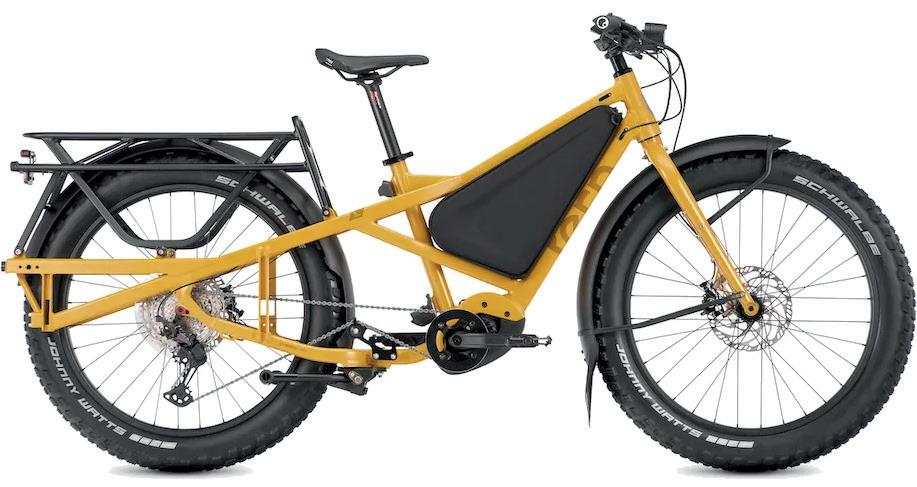
Performance-wise, the Orox delivers beyond expectations. Powered by the Bosch Performance CX motor, it offers remarkable acceleration and torque, seamlessly controlled through the intuitive Kiox head unit and remote controls. The oversized Schwalbe
Johnny Watts tires ensure exceptional comfort and
In the realm of electric bikes, the Tern Orox R14 defies categorization. Positioned by Tern as a vehicle tailored for both adventure and utility, whether for personal exploration or commercial use, this bike transcends traditional boundaries.
stability across varied terrain, enhancing the overall riding experience.
Surprisingly agile for its size, the Orox exhibits impressive handling, particularly evident on off-road trails. Equipped with Magura MT-5 hydraulic disc brakes, it boasts reliable stopping power, instilling confidence in diverse riding conditions.
However, despite its commendable performance, the Rohloff-equipped model reveals some drawbacks. The intricate gear-shifting mechanism, although functional, interrupts the riding rhythm, especially during climbs.
Nevertheless, the Tern Orox R14 remains a compelling choice for enthusiasts seeking a versatile electric bike with robust cargo capabilities. Its innovative design and formidable performance make it a worthy contender in the ever-evolving e-bike landscape, earning it a well-deserved place among top-tier options for adventurers and urban commuters alike.
27 E-BIKE REVIEW
THE LONGEST RANGE
ELECTRIC CARS IN THE UK
We all know that range anxiety is largely something that non-EV owners get hung up on and most electric car drivers don’t even consider any more.
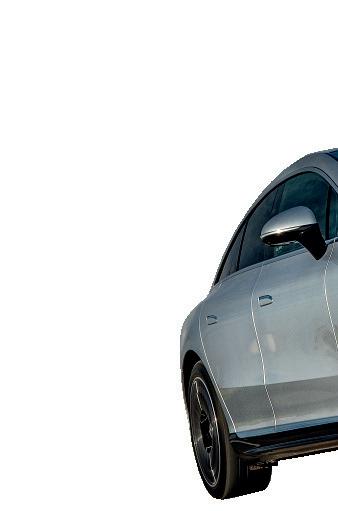


can debate whether an all-electric SUV should share a name with a V8-powered
car but you can’t argue that the
isn’t an impressive bit of kit. There’s plenty of space for five people, a huge and
You
sports
Mustang Mach-E
372 miles.
miles FORD MUSTANG MACH-E 10.
user-friendly
touchscreen, some neat design touches and even a 480bhp GT option. For long distances, though, you’ll want the RWD Extended Range whose 91kWh battery is good for
372
But an EV’s range remains one of the biggest questions asked by buyers, and manufacturers are locked in an arms race to produce cars that can cover ever-greater distances without stopping.
Here, we round up the EVs with the longest range currently on sale in the UK, although with the rate of change, it could well change again in a matter of weeks.

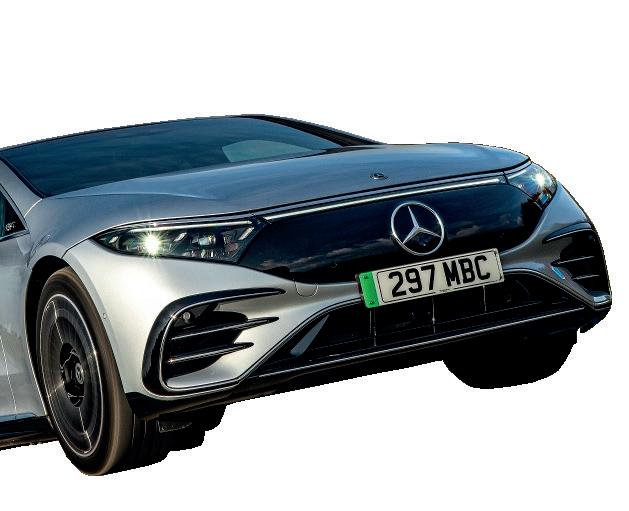
9.
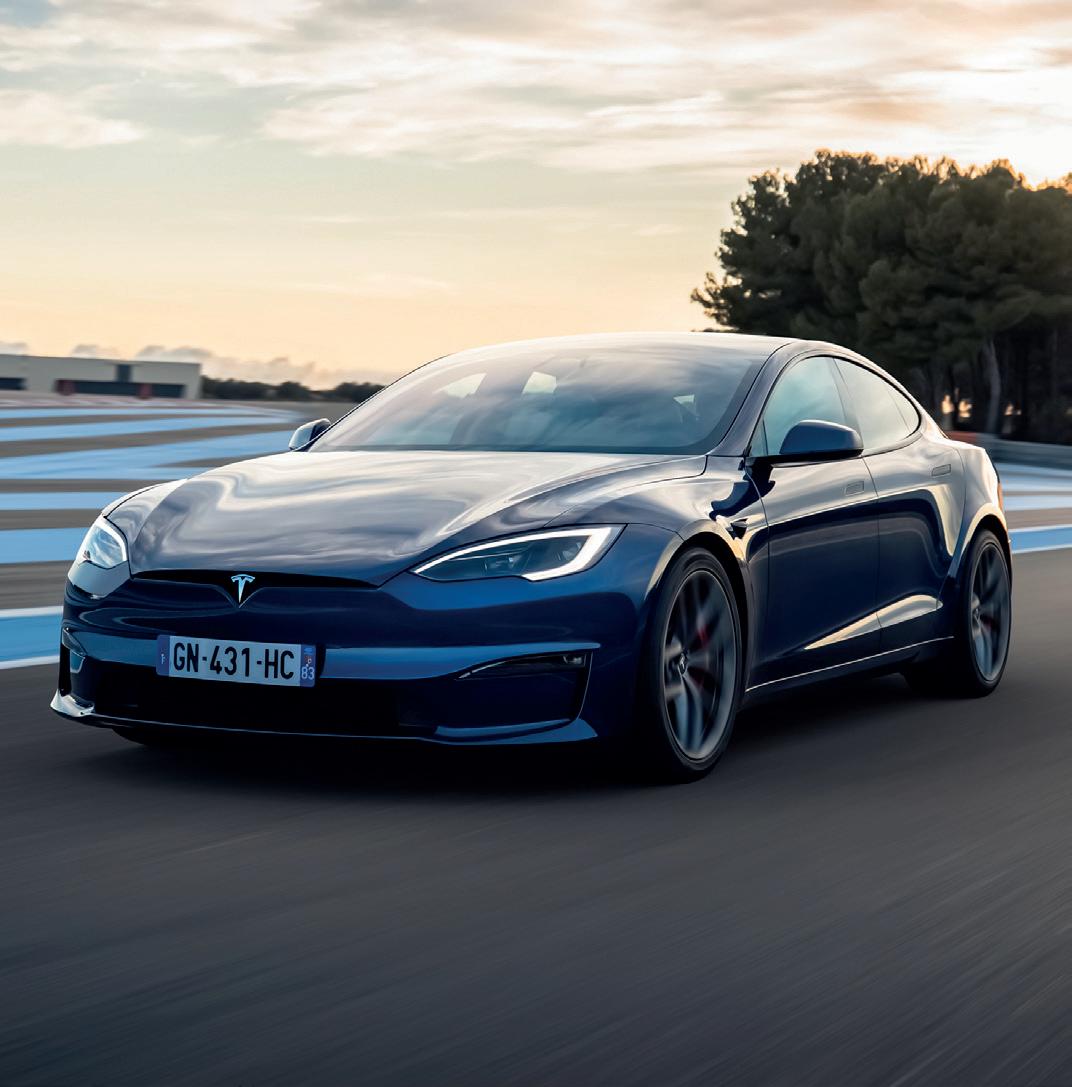
373 miles
TESLA MODEL S
Tesla has long been lauded for the range of its cars and the speed at which they recharge. Even though the Model S is getting on in years, it’s still among the best in the business for all-out driving range. Pick a long-range model and its 95kWh battery should carry you 373 miles. The only catch is you’ll have to buy a left-handdrive European model as the US firm has stopped building cars for the UK market.
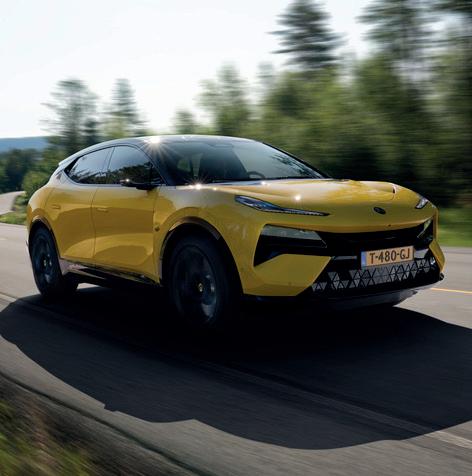
373 miles LOTUS ELETRE
Lotus is in the middle of a massive transformation, going from building small petrol-powered sports cars to making all-electric models straddling the SUV, grand tourer and hypercar spheres. The Eletre is its first EV, a self-proclaimed ‘hyper-SUV’ that packs up to 893bhp and breathtaking performance in range-topping R specification. Even entry-level cars offer 595bhp and, thanks to a 109kWh battery, can cover up to 373 miles on a single charge.
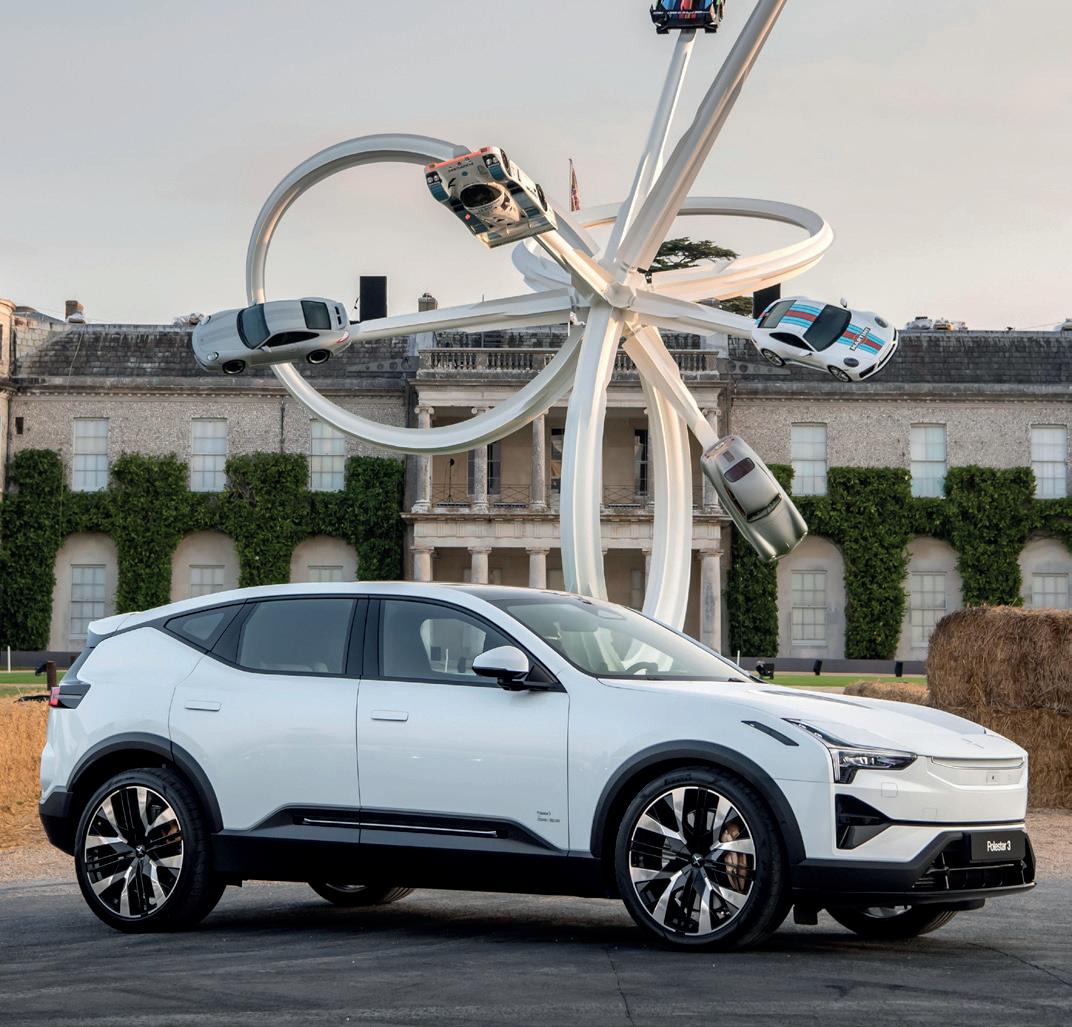
379 miles POLESTAR 3
The Polestar 3 is available to order now, with first UK deliveries expected in October, bringing with them a new design direction for Polestar and an impressive ability to cover ground. The slick Swedish SUV is a full-sized challenger to the likes of the BMW iX and comes with an all-wheel-drive setup that offers 483bhp in even its most basic spec. All versions of the 3 come with a 107kWh battery but the 503bhp performance pack robs it of a little range, so we’d stick with the regular Long Range Dual Motor version and its 379-mile capability.

379 miles RENAULT SCENIC E-TECH
Some people complain that the new Scenic is a regular old SUV rather than a flexible MPV like its namesake. We reckon that hardly matters when it’s able to travel almost 380 miles on a single charge and recharge at up to 150kW. The 217bhp motor won’t set the world alight but it’s plenty for a family SUV where space and practicality are more important. And with prices starting at £41,000 it’s competitively priced too.
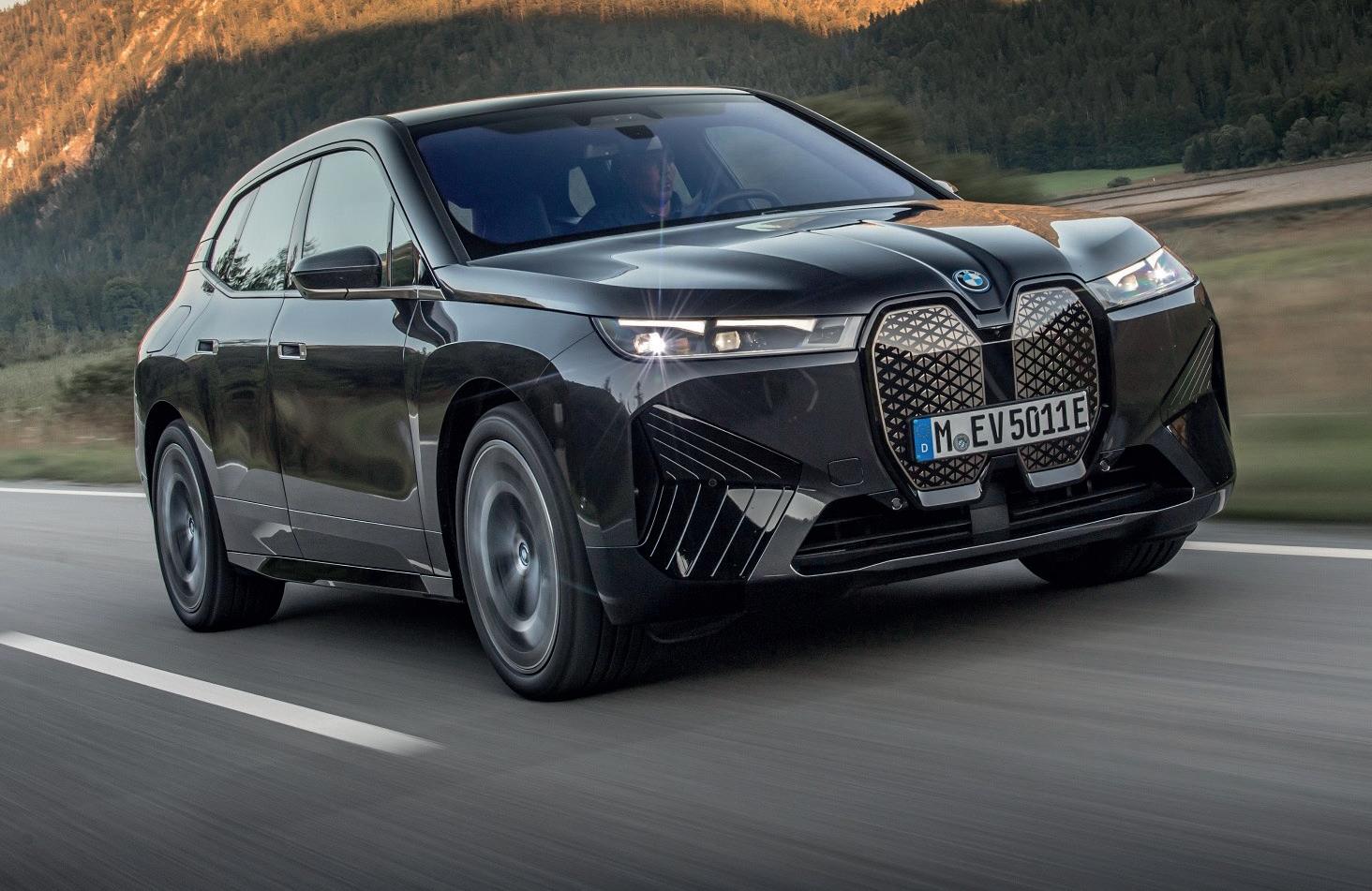
383 miles BMW i X
The iX
and it drives remarkably well for such a large car. Unusually, it’s the highperformance XDrive50 that has the longest range, thanks to a 108kWh battery that’ll allow you to travel almost 400 miles while putting people off their lunch.
8.
has a face only a mother could love but beneath the ugly surface there’s plenty to like. Everything about the iX is big, from its road presence to its interior space, power and range. The cabin is a luxurious high-tech haven
6.
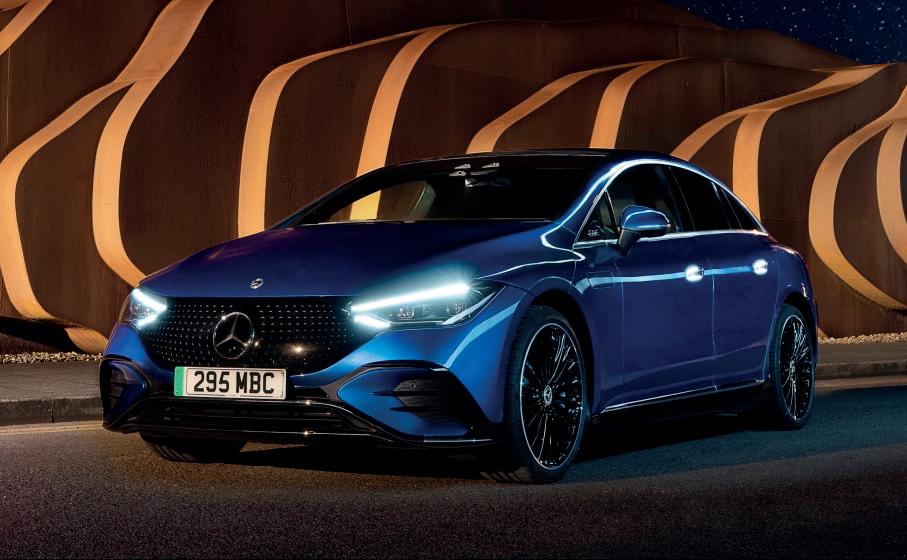
380 miles MERCEDES-BENZ EQE
Mercedes’s naming convention might not be imaginative but it is easy to understand. The EQE is the electric sibling to the popular E Class executive saloon, pitching it against the BMW i5 and perhaps the Polestar 4. Under the skin it’s a high-tech marvel
5.
with some of the most advanced driver assistance and infotainment out there, including the full-dash-width Hyperscreen. In entry-level 300 spec, it offers 242bhp and 380 miles of range, while the 350 loses 4 miles of range but gains 46bhp.

387 miles BMW i7
Like Mercedes, BMW’s naming plan is pretty easy, so this is obviously the electric equivalent of the flagship 7 Series. A luxury limo to rival the Mercedes EQS, the i7 is packed to the rafters with the very latest technology and can
even be specified with a 31-inch rear cinema screen. Its 387-mile range should mean your passengers have plenty of time to enjoy a movie before you have to stop and top-up, and 195kW charging means you won’t be stationary for long.
7.
4.
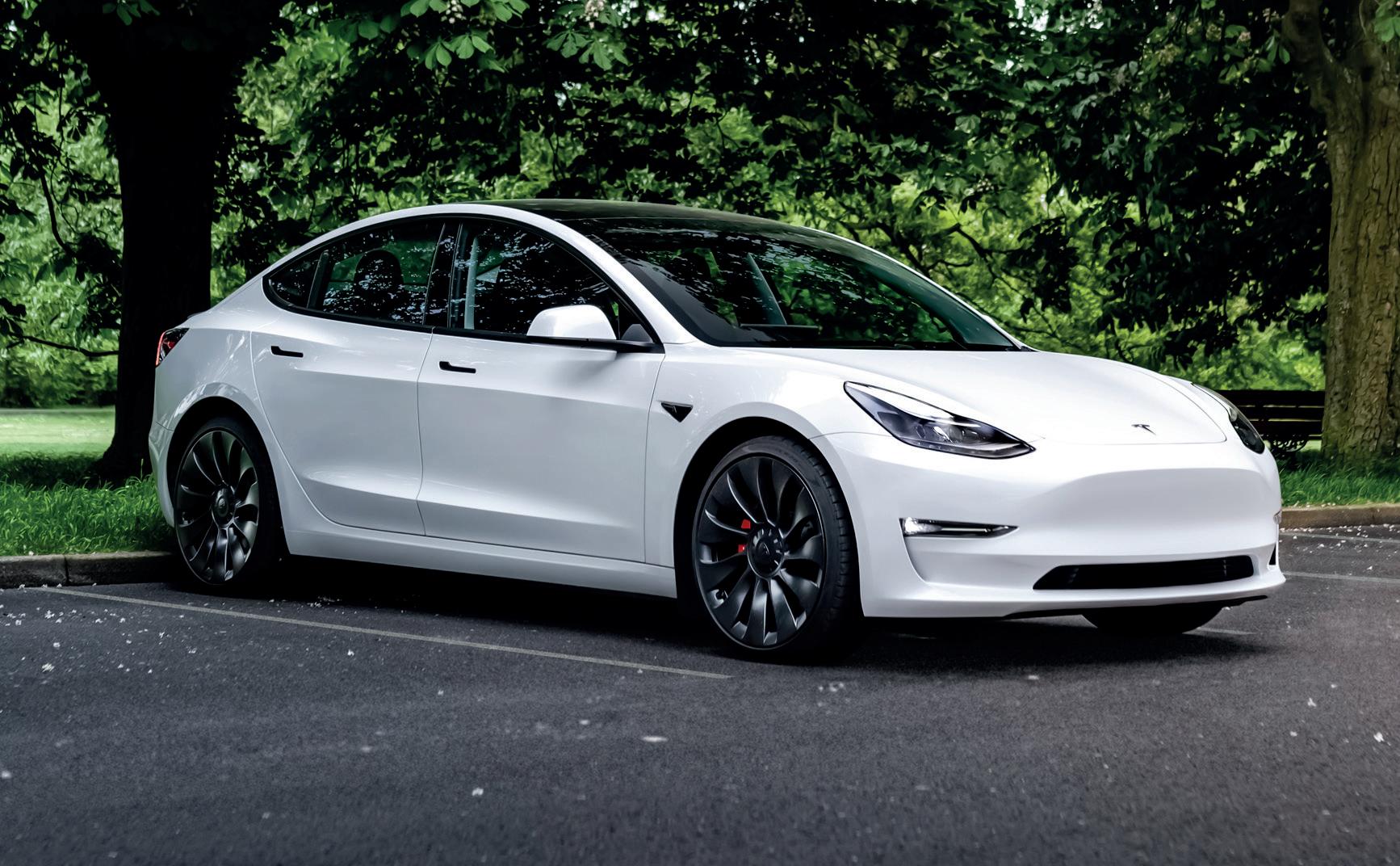
390 miles TESLA MODEL 3 LONG RANGE
Tesla remains one of the champions of long range thanks to the Model 3. With 421 miles available in the all-wheel-drive long range edition, it’ll go from Edinburgh to London on a single charge. The button-less interior and
2.
jelly mould looks aren’t to everyone’s tastes but there’s no doubting the Model 3’s long-legged abilities.

440 miles FISKER OCEAN
We’ve been waiting for what feels like an age for the Fisker Ocean but it looks like it will finally arrive in the UK in 2024. Order books are open now for this smart looking American SUV, with prices starting at £36,900. That will get you the basic
Sport spec car with a respectable 288 miles of range. But if you really relish a roadtrip, the Ocean Extreme features a 113kWh battery good for 440 miles, as well as a twin-motor powertrain that can get from 0-62mph in less than four seconds.
3.
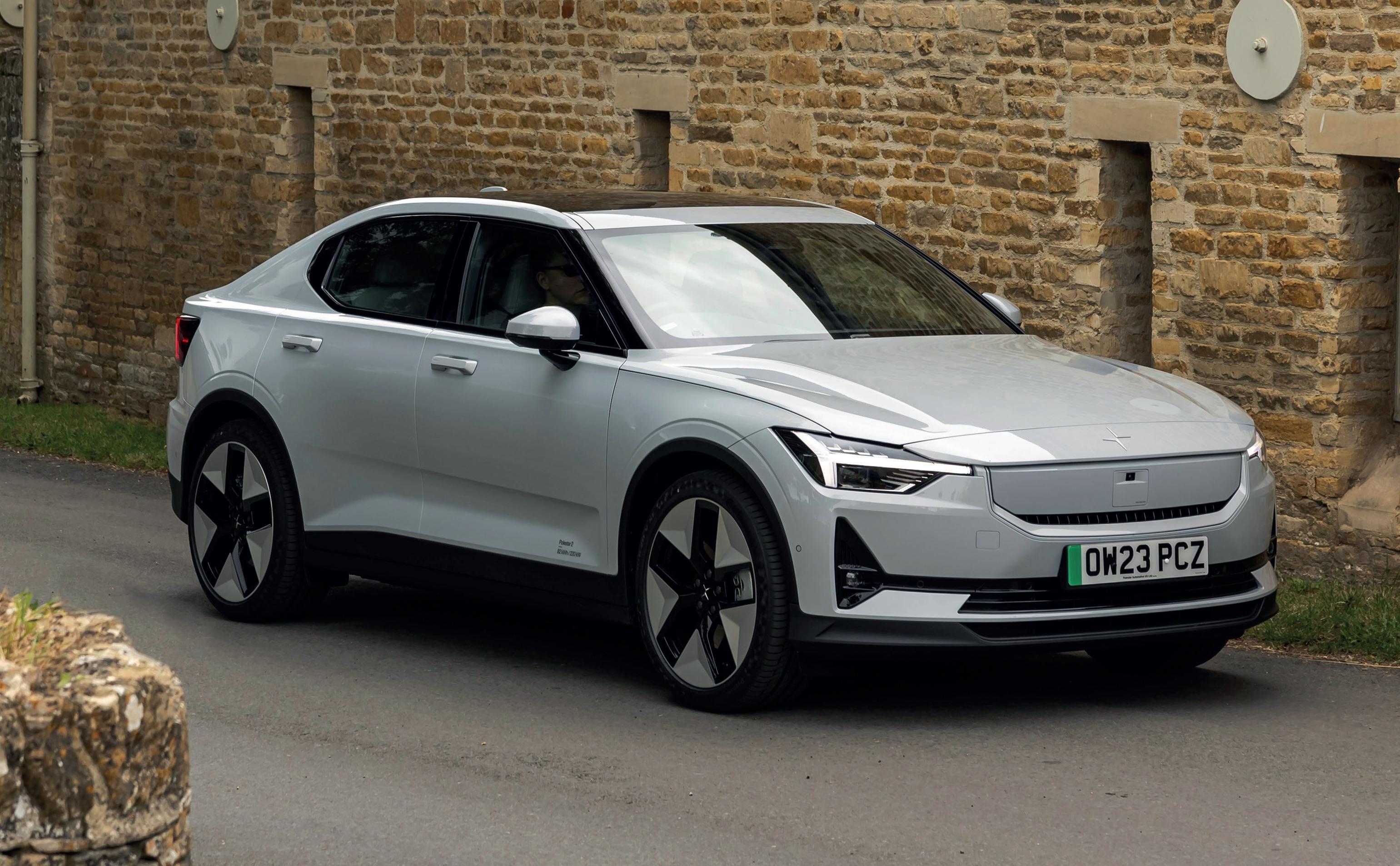
406 miles POLESTAR 2
Polestar updated the 2 in late 2023 to make its already impressive executive saloon even better. The main changes involved moving the motor from the front to rear axle and fitting new larger batteries with smarter management.
1.
In the longest-range single-motor model, those changes amounted to a 67bhp boost and more than 100 extra miles of range, enough to catapult it up our list.

441 miles MERCEDES-BENZ EQS
The EQS is Mercedes’s flagship model and everything about it is designed to impress. Virtually nothing can touch it in terms of technology and, at 5.2 metres, it’s longer than a Range Rover, with a slippery aerodynamic shape designed to
aid efficiency. With a massive 108kWh battery powering its single rear motor, the EQS 450+ is capable of covering up to 441 miles in one go. Ultra-quick 200kW charging also means a 10-80% top-up takes less than half an hour.
EV CHARGING COSTS UP 11% SINCE LAST YEAR BUT STILL CHEAPER THAN PETROL
The cost of using the UK’s public charging network has risen by more than 10% in the last year, according to new data.
Analysis of data from the Zapmap Price Index show that the overall cost of using public chargers increased by 11% between January 2023 and January 2024, with ultra-rapid prices rising slightly less than slow and fast charging.
Drivers now pay a weighted average of 81p/kWh for rapid and ultra-rapid charging, and 55p/kWh for slow and fast charging. Despite the shift, Zapmap estimates that most EV drivers are still paying less per mile than a motorist in an equivalent petrol-powered vehicle.
Zapmap’s experts say that part of the reason for the increase was a consolidation of prices among ultra-rapid charging providers. While some operators maintained their prices last year, others significantly increased theirs to bring them in line with their rivals’. According to Zapmap, the top six providers have now settled at 79p/kWh, while Instavolt charges 85p/kWh.
The data also shows that drivers are increasingly turning to ultra-rapid chargers on the public network. Device numbers grew 112% in 2023 but ultra-rapid sessions rose 150% over the same period and in December 2023 accounted for 45% of all energy delivered.
Zapmap COO, Melaine Shufflebotham, said that economic uncertainty and cost pressures on charging networks had also contributed to higher costs and meant a drop in prices was unlikely in the near future. Operators have been hit by a change to the grid code that means they now face standing charges that are, in some cases, 10 times what they were two years ago. In parallel, they are facing increasing pressure to deliver a good return on investment.
Shufflebotham said: “With the continued uncertainty in wholesale energy prices and other cost
pressures, don’t expect prices on the public charging network to come down in the near future.
“However, looking to the future, there are reasons to be positive. There is continued pressure on the government to equalise the VAT levels between domestic and public charging at 5%. FairCharge is campaigning hard on this and the recent recommendations from the House of Lords also state that the government should act on this.
“In addition, the industry is working both to look at the standing charges and to see if they can get electricity within the government’s Renewable Transport Fuel Obligation.
“In the here and now, most electric car drivers continue to experience lower costs than driving an equivalent petrol or diesel car.”
EV drivers who charge mostly at home on an EV-specific tariff could be saving almost £800 a year compared with a petrol or diesel driver, according to Zapmap’s calculations. Based on an average tariff of 8.5p/kWh, someone who charges at home 80% of the time and uses rapid chargers the rest of the time will pay just 7p per mile while an ICE driver will pay 15p per mile.
Even those who only charge at home half the time and use a mix of fast and rapid chargers elsewhere will pay just 11p a mile.
However, reinforcing the need for a cut in VAT on public charging, the data does show that those without access to home charging are still struggling. For someone using slow or fast public
charging 80% of the time - for instance at kerbside devices - and rapid charging the other 20%, the per-mile cost is 18p.
Jade Edwards, head of insights at Zapmap, said: “We know that 2023 was a very good year for EV charging, with record growth across the board and especially good progress for ultra-rapid infrastructure in the UK.
“So it’s really interesting to see from these figures how EV charging prices changed last year, in line with the more than 100% growth in ultra-rapid devices being installed across the country.
“Although 2023 saw some charge point operators increase their prices to move more in line with the market, the changing mix of public charging options and the shift in use from rapid to ultra-rapid devices is also a contributing factor. This is particularly significant because we know that electric car drivers were less likely to seek out a cheaper alternative to refuel than when driving a petrol or diesel car.”
A survey of drivers found that just 10% of EV said they “always” sought out the cheapest charging points, compared with 20% of ICE drivers who seek out cheaper fuel. And 29% of EV owners said they never actively looked for the cheapest charging locations. Despite this. 62% said that the cost of public charging was a problem - up from 41% in 2022.


EV RESEARCH 34
BETTER RANGE LABELLING ON ELECTRIC VANS IS CRITICAL TO ADOPTION
The current WLTP method of measuring range needs to be updated to avoid stalling uptake, says the Association of Fleet Professionals. Its chair, Paul Hollick, explains why.
“We’ve had reports during the last few weeks from operators of electric vans with a WLTP range of 200 miles experiencing half that range with a full load in cold conditions. That’s a reduction that is extremely difficult for fleet managers to work their way around in operational terms.
Ultimately, it means that the official data designed to guide fleets towards making informed buying decisions is at best, inaccurate and, at worst, leads to the purchase of vehicles that are not fit for purpose. These are very expensive mistakes for businesses to be making.
Accurate data is critical to success
Ideally, we’d end up with a grid that perhaps showed how vans operated with no load, a medium load and a full load in warm, normal and cold conditions. Also, it would be useful to know something about towing capacity. This is not a
complex or onerous request but a fundamental one bearing in mind the technology.
Ultimately, having an accurate idea of how electric vans will perform in real world conditions is critical to their successful adoption. Fleet managers can’t make informed buying decisions without having a good indication of range. Instead, they are coming into work on cold mornings and finding that the routes they had planned are unviable, sometimes creating huge difficulties.
If you’re allocating electric vans with a light load to local routes, then you are unlikely to encounter any problems, and we have many members in that position for whom electrification is proving relatively easy. However, if you have bought a van with a 200-mile range because you need a 200mile range, then the WLTP figures could result in you acquiring a vehicle that just doesn’t meet your requirements.

Opportunity for UK to lead the way
What we need to happen is for the WLTP standard for electric vans to change but as the agreement is made at a United Nations level, bringing that pressure to bear is extraordinarily difficult, especially in a short timeframe. Perhaps there is potential for the UK to introduce its own labelling system alongside WLTP, perhaps as a manufacturer initiative and especially for light commercial vehicles, but this may also be a long shot.
However, what is abundantly clear is that the existing WLTP range figures for electric vans are not fit for purpose and are acting as a potential roadblock to adoption. It’s a situation that benefits no-one – not manufacturers, not fleets, and not governments who want to see rapid adoption of zero emissions vehicles.”

35 OPINION
Want more control of your business budgeting?
This is Jasmin. She’s one of many business owners who already use a smart meter to feel more in control of their budgeting, because smart meters help you track your energy use and costs over time.
So like Jasmin, you can spend less time guessing and instead know how much you’re spending on your energy bills.
Search ‘get a smart meter’ today.


Eligibility may vary. Consumer action required. ALBERT EINSTEIN rights licensed by the H.U.J./BEN Group, Inc.



A Glimpse into the Future of Energy Management
The latest news and updates for everything Electric Home
+
NAVIGATING THE SMART HOME ENERGY REVOLUTION:

‘RECORD FALL IN FOSSIL FUELS USE’ across UK and EU in 2023
There has been an unprecedented fall in fossil fuel use in the EU and UK - with renewables continuing to grow, according to a new report.

EU and UK coal and gas power fell respectively by 19% and 16% in 2023, according to the European Electricity Review published on Wednesday by thinktank Ember.
“Europe is entering a new era of energy transition, with the cleanest power sectors ever in the UK and the EU last year,” said Ember’s Europe programme director Sarah Brown.
“Fossil fuels are playing a smaller role than ever as a system with wind and solar as its backbone comes into view.”
In the EU, renewables rose to a record 44% share of EU power and, for the first time, wind produced more electricity - 18% - than gas17% - in 2023.
The UK also reported record clean power generation with wind and solar accounting for a third - 33% - of the total, up from 29% in 2022.
However, despite these achievements, the UK is facing challenges as in September when the offshore wind auction failed to secure any bids, a threat to the UK’s target of 50 GW of offshore wind power by 2030.
A mix of factors contributed to this clean energy shift, like a fall in electricity demand and rising wind and solar power last year.
“We’re seeing, record capacity installations in the EU for both wind and solar annual additions and also an increase in generation and increase in their share,” said Ms Brown.
She also added how recent events played a key role. “We saw an acceleration in the wanting to move towards clean power renewables as a result of Russia’s invasion of Ukraine,” she said.
“When we saw really high skyrocketing gas prices and the energy crisis that ensued as a result of that, then we saw that extra urgency applied to that transition that we needed anyway.”
NEWS 38

‘UK COULD SET OFFSHORE RECORD’
A new report published today by RenewableUK shows London has an opportunity to secure a record number of new offshore wind farms and capacity in this year’s Contracts for Difference auction.

In a huge boost to the UK’s energy security, the study found the government has the potential to double the country’s offshore wind capacity in this year’s tender alone.
RenewableUK’s latest EnergyPulse Insights Offshore Wind report reveals 14 wind farms are already eligible to bid into this year’s AR6 process, providing nearly 10.3GW of new capacity.
The previous records were set in 2022 when 8.5GW was eligible across seven projects.
Additionally, a further 4.7GW of new offshore wind capacity (out of 8.7GW in the planning system) could become eligible before applications open for AR6 at the end of March. If these projects were to receive consent from the government, 14.9GW of offshore wind capacity
would be eligible for this year’s auction. The report notes being eligible does not mean schemes will choose to bid in - but they have the potential to do so.
To put this 14.9GW of potential new capacity into context, the UK currently has 14.7GW of fully operational offshore wind which generates 14% of the country’s entire electricity needs. Just 1GW of offshore wind generates enough electricity to power over a million British homes for a year.
The report also shows a further 5.2GW is already under construction in UK waters, and forecasts nearly 45GW could be fully operational by the end of 2030.
London is due to set out the overall budget and parameters for this summer’s auction next month, so RenewableUK is calling for Ministers to aim high to maximise the amount of capacity the country can secure. Offshore wind is one of the UK’s cheapest sources of new power and is vital in boosting its energy security and independence from expensive imported power, said the trade body.
The report forecasts total global capacity could reach over 340GW by the end of 2030 - almost a fivefold increase from today, with 46% of this capacity in Chinese waters.
“Our latest EnergyPulse report highlights the enormous opportunity which the Government has to strengthen the UK’s energy security, with a record number of new offshore wind farms eligible to bid into this year’s clean power auction, and a record amount of new capacity,” said RenewableUK’s chief executive Dan McGrail.
“As offshore wind farms are one of our cheapest sources of new power for billpayers, we are urging Ministers to be ambitious when they set out the auction budget and parameters next month. If this is done in the right way, we can secure billions in private investment, driving the growth of the UK’s offshore wind supply chain and new jobs in the sector.
“The report also shows that offshore wind is ramping up worldwide at an astonishing pace - and that despite fierce global competition, the UK continues to be a world leader in this vital technology. In this year’s auction, we have the potential to prove again that Britain is one of the best places to invest in new offshore wind projects”.
39 NEWS

SOLAR POWER SURGES: UK Sees Rapid Growth in Solar Installations
The UK is experiencing a remarkable surge in the uptake of solar power. Both residential and commercial installations are on the rise, fuelled by a combination of government incentives and the declining costs of solar technology.
The increasing popularity of solar power represents a pivotal moment in the UK’s transition towards a cleaner and more sustainable energy landscape. With concerns over climate change and the imperative to reduce carbon emissions, solar energy offers a promising solution to meet both environmental and energy security goals.
Government support has played a crucial role in driving the growth of solar power in the UK. Through schemes such as the Feed-in Tariff (FIT) and the Smart Export Guarantee (SEG), homeowners and businesses are incentivized to generate their own clean electricity and even sell surplus energy back to the grid. These incentives not only make solar installations more financially viable but also empower individuals to contribute to the renewable energy revolution.
Furthermore, the falling costs of solar technology have made it increasingly accessible to a wider range of consumers. Advances in photovoltaic (PV) technology, coupled with economies of scale in manufacturing, have contributed to significant reductions in the upfront costs of solar panels. As a result, more households and businesses are choosing to invest in solar energy as a costeffective and sustainable alternative to traditional fossil fuels.
The benefits of solar power extend beyond environmental considerations. Solar installations help to reduce electricity bills, increase energy independence, and create local jobs in the growing renewable energy sector. Moreover, solar energy generation is inherently decentralized, promoting resilience and stability in the national energy grid.
Looking ahead, the trajectory of solar power growth in the UK shows no signs of slowing down. Continued government support, coupled with ongoing technological advancements, is expected to further accelerate the adoption of solar energy, driving the nation towards a brighter, cleaner, and more sustainable future.

NEWS 40

UK GOVERNMENT Charts Course for Low-Carbon Hydrogen Economy with Ambitious Strategy
The UK has taken a significant step towards a greener future with the unveiling of its hydrogen strategy by the government.
EU and UK coal and gas power fell respectively by 19% and 16% in 2023, according to the European Electricity Review published on Wednesday by thinktank Ember.
“Europe is entering a new era of energy transition, with the cleanest power sectors ever in the UK and the EU last year,” said Ember’s Europe programme director Sarah Brown.
“Fossil fuels are playing a smaller role than ever as a system with wind and solar as its backbone comes into view.”
In the EU, renewables rose to a record 44% share of EU power and, for the first time, wind produced more electricity - 18% - than gas - 17% - in 2023.
The UK also reported record clean power generation with wind and solar accounting for a third - 33% - of the total, up from 29% in 2022.
However, despite these achievements, the UK is facing challenges as in September when the
offshore wind auction failed to secure any bids, a threat to the UK’s target of 50 GW of offshore wind power by 2030.
A mix of factors contributed to this clean energy shift, like a fall in electricity demand and rising wind and solar power last year.
“We’re seeing, record capacity installations in the EU for both wind and solar annual additions and also an increase in generation and increase in their share,” said Ms Brown.
She also added how recent events played a key role. “We saw an acceleration in the wanting to move towards clean power renewables as a result of Russia’s invasion of Ukraine,” she said.
“When we saw really high skyrocketing gas prices and the energy crisis that ensued as a result of that, then we saw that extra urgency applied to that transition that we needed anyway.”
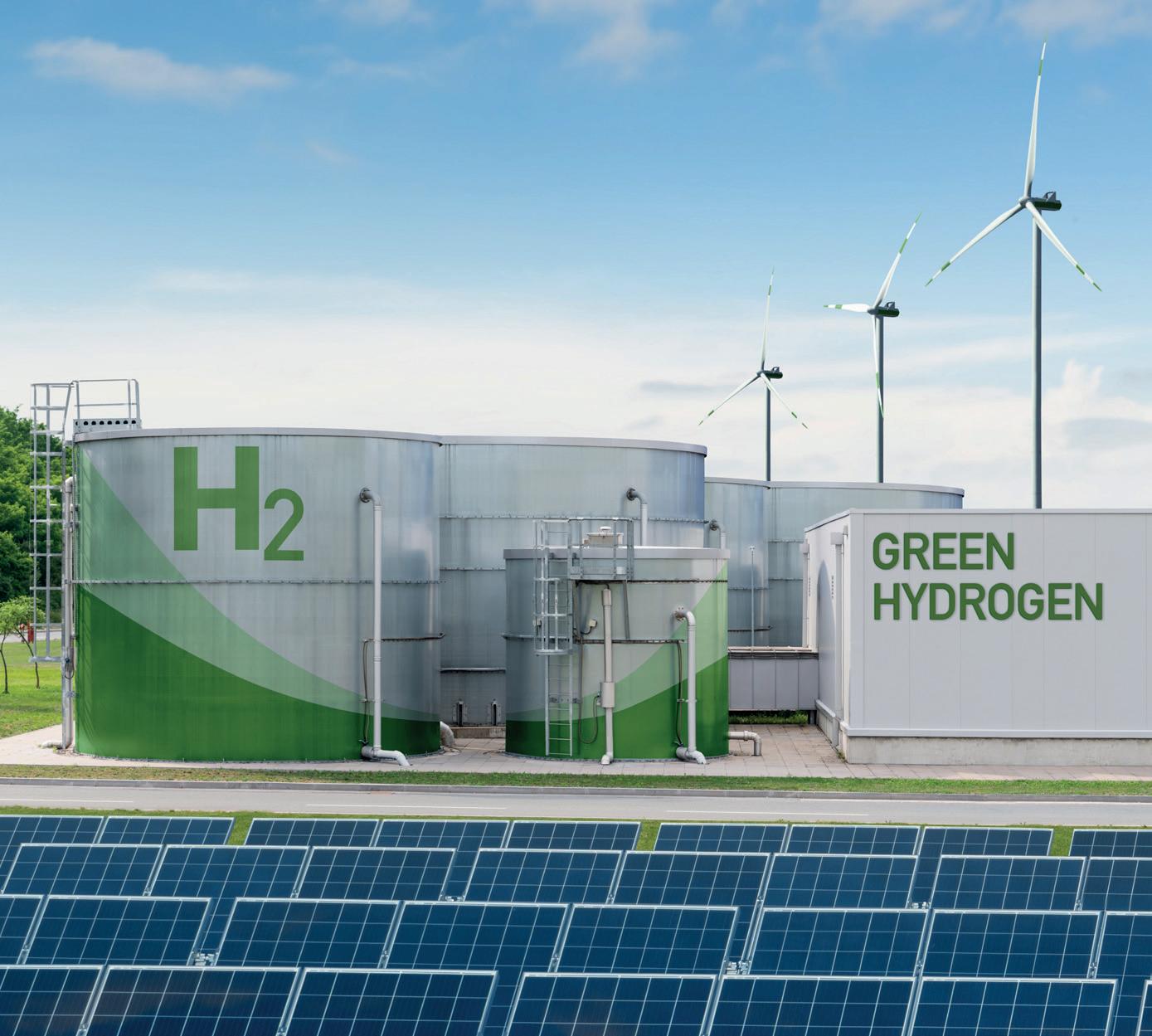
UK HALVES EMISSIONS SINCE 1990
The UK is the first major economy to halve its emissions, having cut them by 50% between 1990 and 2022, while also growing its economy by 79%.
New official statistics released today from the Department for Energy Security and Net Zero found this compares to a 23% reduction in France and no change in the USA between 1990 and 2021. With renewables now accounting for more than 40% of the country’s electricity – up from just 7% in 2010, this shows the UK is leading the way on cleaner energy.
In 2012, coal provided almost 40% of UK electricity, but later this year, this will be zero.

UK TO QUIT ENERGY TREATY THAT ‘PENALISES’ NET ZERO
The U.K. is set to leave an “outdated” international energy treaty after ministers concluded it could stymie efforts to achieve net zero carbon emissions by 2050.
Energy Minister Graham Stuart will confirm on Thursday that the U.K. is following several other countries — including France, Spain, and Germany — in quitting the controversial Energy Charter Treaty (ECT). Environmental campaigners welcomed the news, saying that the treaty could undermine U.K. efforts to combat climate change.
The decision in Westminster comes as the EU itself also seeks a route to withdraw, although not all countries in the bloc want to follow suit.
First agreed in 1994, the ECT offers legal protections to energy investments and was designed to promote Western financial backing for projects in former Soviet states.
But critics say it has exposed governments to legal action from fossil fuel companies and their investors, who have used the treaty to sue governments over clean energy and climate policies that could hit their profits.
41 NEWS

NAVIGATING THE SMART HOME ENERGY REVOLUTION:
A Glimpse into the Future of Energy Management
In an era marked by growing environmental concerns and a push towards sustainable living, the concept of the smart home has emerged as a beacon of hope for energyconscious consumers. At the heart of this revolution lie smart home energy management systems – sophisticated technologies designed to monitor, analyse, and optimize energy usage within the household. As we embark on a journey towards a more sustainable future, it’s essential to explore the latest advancements in these systems and their potential to transform the way we consume and manage energy in our homes.
Unlocking the Power of Data: AI-Powered Energy Analytics
Imagine a home that not only reacts to your energy needs but anticipates them with precision. Thanks to advancements in artificial intelligence (AI) and data analytics, this vision is becoming a reality. Smart home energy management systems are harnessing the power of AI to analyse vast amounts of data, including energy consumption patterns, weather forecasts, and occupancy schedules. By learning from past behaviors and adapting in real-time, these systems can optimize energy usage, minimize waste, and ultimately reduce utility bills.
Dr. Emily Jones, a leading researcher in energy analytics, explains: “AI-driven algorithms have the ability to identify inefficiencies and opportunities for energy savings that may go unnoticed by traditional methods. By continuously learning and adapting to changing circumstances, these systems can achieve unprecedented levels of energy efficiency.”
Predictive Insights: Harnessing Machine Learning for Energy Optimization
Imagine a home that not only reacts to your energy needs but anticipates them with precision. Thanks to advancements in artificial intelligence (AI) and data analytics, this vision is becoming a reality. Smart home energy management systems are harnessing the power of AI to analyse vast amounts of data, including energy consumption patterns, weather forecasts, and occupancy schedules. By learning from past behaviors and adapting in
real-time, these systems can optimize energy usage, minimize waste, and ultimately reduce utility bills.
Dr. Emily Jones, a leading researcher in energy analytics, explains: “AIdriven algorithms have the ability to identify inefficiencies and opportunities for energy savings that may go unnoticed by traditional methods. By continuously learning and adapting to changing circumstances, these systems can achieve unprecedented levels of energy efficiency.”

The IoT Revolution: Building a Connected Home Ecosystem
At the heart of every smart home energy management system lies a network of interconnected devices, collectively known as the Internet of Things (IoT). From smart thermostats and lighting controls to intelligent appliances and solar panels, these devices work in harmony to optimize energy efficiency and enhance the overall comfort and convenience of the home.
Dr. Mark Davis, a leading expert in IoT technologies, emphasizes the importance of interoperability: “For smart home energy management systems to reach their full potential, interoperability is key. Devices from
SMART HOME 42
SMART HOME

different manufacturers must seamlessly communicate with each other to ensure a cohesive and efficient energy management strategy.”
Overcoming Challenges:
Addressing Data Privacy and Interoperability Issues
While the future of smart home energy management systems is undoubtedly promising, it’s not without its challenges. Data privacy concerns, interoperability issues, and the need for robust cybersecurity measures remain significant hurdles to widespread adoption.
Dr. Sarah Patel, a cybersecurity expert, warns: “As we entrust more of our personal data to smart home devices, it’s crucial to prioritize security and privacy. Manufacturers must implement robust encryption protocols and regularly update their software to protect against potential vulnerabilities.”

Charting the Path Forward: Policy and Innovation
As we look ahead, the role of policymakers in promoting energy-efficient technologies cannot be overstated. Through targeted incentives, regulations, and standards, governments can incentivize the adoption of smart home energy management systems and accelerate the transition to a sustainable energy future.
Dr. Michael Green, a policy analyst, explains: “Policymakers have a unique opportunity to drive innovation and investment in smart home energy management. By incentivizing energy-efficient upgrades and promoting consumer awareness, we can create a more resilient and sustainable energy system for future generations.”
In conclusion, the future of smart home energy management systems holds immense promise for energy-conscious consumers and environmental advocates alike. By harnessing the power of AI, machine learning, and IoT technologies, these systems have the potential to revolutionize the way we consume and manage energy in our homes. However, to realize this vision, stakeholders must work together to overcome challenges, address concerns, and chart a path towards a more sustainable future.
43

Forget new car envy or the pandemic pet ownership boom, the biggest influence a neighbour’s behaviour has is now around home improvements and being more eco-friendly, according to new consumer insights.
The research revealed that more than a third of Brits are heavily influenced by their neighbours when it comes to being more green, and nearly 40% would consider home improvements if a neighbour were to have work done or installed.
In addition, more than a quarter say they live in or would choose to live in an area where the community is more eco-conscious, with renewable energy sources like solar panels in use. And those considering renewable energy sources say they would feel proud about doing something good for the planet. Actions speak louder than words, though as 28% of Brits revealed they do not speak to their neighbours at all. But of those who do, almost 10% discuss the environment more than they did five years ago, and one in five say they would seek out advice from their neighbours on renewable energy sources for their home. Perhaps unsurprisingly, the cost-of-living is the biggest rising issue discussed, with more than 40% of Brits chatting about the topic over the garden fence.
Adam Parvez, Behavioural Science Specialist at iChoosr, which delivers the Solar Together group buying schemes, says: “Our new research shows the power of social influence and community dynamics in fostering sustainable behaviours. Individuals look to their peers for cues on how to act, especially in areas where they may feel uncertain or seek validation.
“The findings build on previous research that found one of the biggest predictors of getting solar panels was if your neighbour also had them – and, in particular, if existing installations are highly visible. Understanding and harnessing these behavioural drivers will not only drive adoption of renewable energy - facilitating a shift towards more sustainable living - but also build stronger, more environmentally conscious communities in the process.”
Despite 44% agreeing they like the idea of being more self-sufficient, the study reveals homeowners

are being held back from adding renewable energy sources to their homes due to the perceived complexity and a lack of understanding around the financial implications. And, with a General Election looming, there is a clear lack of understanding about the Government’s positions and policies relating to environmental issues. In fact, a third admitted to not even knowing who the UK Energy Secretary is and some admit they have no understanding of the Government’s environmental policies.
George Frost, UK Country Manager at iChoosr, which delivers the Solar Together group buying schemes, says: “The rising cost-of-living and shakeup in the energy market over the past couple of years have shifted perceptions and attitudes – and as a result rising numbers of homeowners are looking for renewable energy sources to cut costs and be more eco-conscious. And, as we can see, more of us are now leaning over the garden fence to ask for neighbourly advice on how to make the switch.”
NEIGHBOUR PRESSURE 44
UK BUSINESS,




Brazil, Australia and Malaysia are among the most exciting markets for UK companies to sell to.
Learn about international opportunities for your sector at great.gov.uk/markets
Made in the UK
Sold to the World



HARNESSING theSUN:
Unleashing the Power of RESIDENTIAL SOLAR
ENERGY STORAGE

As the world shifts towards renewable energy sources, residential solar installations have become increasingly popular among environmentally conscious homeowners. However, the intermittent nature of solar power generation poses a challenge: What happens when the sun isn’t shining?
HARNESSING THE SUN 46
HARNESSING THE SUN
Enter residential solar energy storage – a game-changing technology that allows homeowners to store excess solar energy for use during periods of low or no sunlight. In this feature, we delve into the latest advancements in residential solar energy storage technologies, exploring their role in achieving energy independence and resilience.
THE EVOLUTION OF ENERGY STORAGE: FROM LITHIUM-ION TO FLOW BATTERIES
Residential solar energy storage systems come in various forms, each with its own set of advantages and limitations. Lithium-ion batteries, the most commonly used type of energy storage, are renowned for their high energy density, fast charging capabilities, and relatively compact size. However, they can be expensive and may degrade over time.
On the other hand, flow batteries offer a longer lifespan and scalability, making them ideal for larger residential installations. These batteries store energy in a liquid electrolyte solution, allowing for greater flexibility in energy storage capacity.
Dr. Sarah Johnson, a leading expert in energy storage technologies, explains: “The choice of energy storage technology depends on factors such as


cost, space availability, and desired performance characteristics. Homeowners should carefully evaluate their needs and consult with a qualified installer to determine the most suitable solution for their home.”
EMPOWERING HOMEOWNERS: INSIGHTS FROM SOLAR INDUSTRY PROFESSIONALS AND EARLY ADOPTERS
To gain a deeper understanding of residential solar energy storage, we spoke with solar industry professionals and homeowners who have embraced this technology. John and Emily Davies, residents of Manchester, share their experience: “Since installing a solar energy storage system in our home, we’ve seen a significant reduction in our electricity bills. Not only are we saving money, but we also feel empowered knowing that we’re contributing to a more sustainable future.”
Industry professionals emphasize the importance of proper system design and maintenance. Mark Reynolds, a solar installer, advises: “It’s crucial to size the energy storage system appropriately and ensure compatibility with existing solar panels. Regular maintenance checks are also essential to optimize performance and prolong the lifespan of the system.”
EMERGING TRENDS: VIRTUAL POWER PLANTS AND PEER-TOPEER ENERGY TRADING PLATFORMS
In addition to storing excess solar energy for personal use, homeowners can participate in emerging energy sharing models such as virtual power plants (VPPs) and peer-to-peer energy trading platforms. VPPs aggregate energy storage systems from multiple households to provide grid services such as peak shaving and load balancing.
Dr. Emma White, a researcher in energy economics, highlights the potential of peer-to-peer energy trading: “Peer-to-peer energy trading
platforms enable homeowners to buy and sell excess solar energy directly to their neighbors, bypassing traditional energy suppliers. This not only promotes community resilience but also fosters a sense of ownership and control over energy production and consumption.”
REGULATORY AND FINANCIAL CONSIDERATIONS: NAVIGATING THE PATH TO ADOPTION
Despite the numerous benefits of residential solar energy storage, regulatory and financial barriers persist. Policies such as net metering, which allows homeowners to receive credit for excess solar energy exported to the grid, play a crucial role in incentivizing investment in energy storage. Dr. James Smith, a policy analyst, emphasizes the need for supportive regulatory frameworks: “To unlock the full potential of residential solar energy storage, policymakers must enact policies that promote grid flexibility and encourage investment in distributed energy resources. This includes streamlining permitting processes, providing financial incentives, and establishing clear standards for grid integration.”
A BRIGHTER FUTURE WITH SOLAR ENERGY STORAGE
In conclusion, residential solar energy storage represents a significant step towards achieving energy independence and resilience. From lithium-ion batteries to flow batteries and beyond, homeowners now have a myriad of options to store excess solar energy and reduce their reliance on the grid. With emerging trends such as virtual power plants and peer-to-peer energy trading platforms, the residential solar energy landscape is undergoing a transformative shift towards decentralized energy production and consumption. However, to fully realize the potential of solar energy storage, stakeholders must work together to address regulatory, financial, and technological challenges, paving the way for a brighter, more sustainable future.
47

INNOVATIONS IN TransformingTECHNOLOGY: Home Comfort and Sustainability HVAC
In the quest for enhanced comfort, energy efficiency, and environmental sustainability, the realm of HEATING, VENTILATION, and AIR CONDITIONING (HVAC) technology has seen remarkable advancements.
From cutting-edge systems like Variable Refrigerant Flow (VRF) to innovative solutions such as geothermal heat pumps and ductless mini-split systems, the landscape of HVAC is evolving rapidly, redefining what it means to be truly comfortable at home. In this feature, we delve into the latest innovations in HVAC technology, exploring their impact on indoor comfort, energy efficiency, and environmental sustainability.
ENERGY EFFICIENCY
REDEFINED:
The Rise of Variable Refrigerant Flow Systems
At the forefront of HVAC innovation are Variable Refrigerant Flow (VRF) systems, which offer unparalleled energy-saving capabilities and customizable zoning options. Unlike traditional HVAC systems that operate at a fixed capacity, VRF systems dynamically adjust refrigerant flow to match the specific heating and cooling needs of each zone within a building. This precise control not only maximizes energy efficiency but also enhances occupant comfort by eliminating temperature variations.
Dr. Emily Parker, a HVAC engineer, explains: “VRF systems are revolutionizing the way we think about heating and cooling. By providing independent control over each zone, these systems can significantly reduce energy consumption while maintaining optimal comfort levels throughout the home.”
HVAC 48
HVAC
HARNESSING EARTH’S RENEWABLE ENERGY: Geothermal Heat Pumps
Geothermal heat pumps represent another groundbreaking innovation in HVAC technology, tapping into the earth’s natural heat to provide efficient heating and cooling. These systems transfer heat between the home and the ground through a series of underground loops, leveraging the stable temperatures found below the earth’s surface to regulate indoor climate year-round.
John Davies, a homeowner who recently installed a geothermal heat pump, shares his experience: “Since switching to geothermal heating and cooling, our energy bills have plummeted, and our home has never been more comfortable. It’s incredible to think that we’re harnessing renewable energy from beneath our feet.”

DUCTLESS MINI-SPLIT SYSTEMS: Flexibility and Efficiency Combined
Ductless mini-split systems offer a versatile alternative to traditional ducted HVAC systems, providing targeted heating and cooling without the need for bulky ductwork. These systems consist of an outdoor compressor unit and one or more indoor air-handling units, a lowing for customizable zoning and efficient operation.
Mark Reynolds, an HVAC contractor, highlights the benefits of ductless mini-split systems: “Ductless mini-splits are ideal for retrofitting older homes or adding heating and cooling to specific areas. With their compact size and flexible installation options, these systems offer unmatched versatility and energy efficiency.”
PRIORITISING INDOOR AIR QUALITY: Ventilation and Air Filtration Strategies
In addition to temperature control, modern HVAC systems place a strong emphasis on indoor air quality (IAQ), recognizing its critical importance for occupant health and well-being. Advanced ventilation systems, coupled with high-efficiency air filters and air purification technologies, help remove pollutants, allergens, and contaminants from the indoor environment, ensuring a clean and healthy living space.
Dr. Sarah Patel, an expert in indoor air quality, emphasizes the importance of proper ventilation: “Effective ventilation is essential for diluting indoor pollutants and maintaining a healthy indoor environment. By incorporating energy recovery ventilators and HEPA filters into HVAC systems, we can minimize indoor air pollution and improve occupant comfort.”
DRIVING ADOPTION THROUGH REGULATION AND CERTIFICATION
The adoption of advanced HVAC technologies is further propelled by building codes, green building certifications, and energy efficiency standards. Initiatives such as LEED certification, ENERGY STAR labeling, and Building Regulations promote the use of energy-efficient HVAC systems in residential construction and renovation projects, incentivizing homeowners and builders to invest in sustainable solutions.
Dr. Michael Green, a policy analyst, underscores the role of regulation in driving innovation: “By setting stringent energy efficiency standards and incentivizing the use of renewable energy technologies, policymakers can accelerate the adoption of advanced HVAC systems and pave the way for a more sustainable built environment.”
The latest innovations in HVAC technology are revolutionizing the way we heat, cool, and ventilate our homes. From energy-efficient VRF systems to renewable geothermal heat pumps and versatile ductless mini-split systems, homeowners now have a wide array of options to enhance comfort, reduce energy consumption, and minimize environmental impact. By prioritizing indoor air quality, optimizing system design, and embracing regulatory incentives, we can create homes that are not only comfortable and efficient but also sustainable for future generations.
49

WHY RENEWABLE ENERGY
IS KEY FOR SELF-BUILD PROJECTS SELF-CONSUMPTION
Jordan Brompton, co-founder and CMO at myenergi, presents the environmental and financial benefits of integrating renewable energy generation technologies into self-build projects and explains why maximising self-consumption is key to reducing your carbon footprint, protecting against energy market volatility and accelerating return on investment.
According to local authority data from the Department for Levelling Up, Housing and Communities (DLUHC), the number of individuals joining the self-build register fell by 34% between 2021 and 2022, with approved planning permissions falling by 23% in the same period. While many experts suggested that this scenario would likely prove a ‘temporary blip’, figures remain poor and future projections show little sign of a quick recovery. But what is the root cause of such a decline? Well, there are a myriad of potential reasons for the slump in self-build projects, all likely tied to the shaky post-COVID economic climate in the UK: inflation is up, raw material prices are up, labour shortages are up, and political instability is creating an air of uncertainty in the sector, despite the initial boost of the Help to Build (HTB) scheme back in 2021.
All bad news, right? Well, maybe not. After all, it’s important to remember that, while the data makes for concerning reading, the UK’s self-build sector remains hugely active. For some, the attractiveness of investing in a renovation, conversation or new build has simply been pushed back a few years, but National Custom and Self Build Association figures suggest that 37,000 projects were still supported in 2023. Tough economic conditions have seemingly temporarily stunted the market, but self-builders are persevering. Strong growth will return cyclically (and most probably in line with economic recovery) but, in the meantime, careful planning and tight financial manage-
ment is essential to ensuring projects are delivered on time, to budget and within strict parameters.
A question of sustainability
But what should self-builders do to achieve this? Well, considering all opportunities for both short- and longterm cost savings is a must. Alongside raw material and labour costs, investigating alternative energy and utility solutions is a good place to start – especially when it comes to installing renewable energy generation technology to protect against supply volatility.
Mainstream microgeneration solutions, such as solar PV and small-scale domestic wind turbines, are an excellent place to start – offering a simple way to offset reliance on the grid, take control of energy spend, and limit exposure to fossil fuels. While many have the misconception that purchasing and installing hardware is expensive, this really doesn’t have to be the case.
According to Which?, a typical 3.5kWp system can be purchased and installed for around £5,500, enough to provide sufficient power for a family of four. With data from Ofgem suggesting that the average annual energy bill for a three to four-bed property currently sits at £1,936 per year, the payback period of renewables is far shorter than might be expected.

But while installing renewable energy generation technology might therefore seem like a no-brainer, it’s important to understand the limitations. Free energy is certainly a huge hook, but the peaks and troughs of renewable generation are unpredictable. What’s more, most homeowners are out of the house during periods of high generation and use most energy during low periods. As such, it’s not unusual to see users exporting surplus energy to the grid and buying it back (at a far more expensive rate) when they need it most.
In the past, this scenario has proven a barrier too high for most homeowners to overcome, but thanks to significant developments in battery technology, new innovation in self-consumption solutions, and recent tax reliefs from the government on energy saving materials (ESMs) , the picture is changing.
An eco-smart solution
At myenergi, we’re best known for designing the market’s first eco-smart electric vehicle charging device – zappi – a future-proofed solution that, alongside operating as a mains-connected charging device, seamlessly integrates with renewable energy generation technologies to harness self-generated energy and allow users to charge their EV for free. In periods of low generation, zappi is able to automatically optimise around energy tariff’s to enable charging at both cheaper and greener times from the grid.
The idea of smart, automated home ecosystems that use renewable energy to power and warm homes while recharging an EV a real game-changer. However, it’s not a vision for the future, it’s available today.
By considering renewable energy technology at the outset, self-builders can effectively design energy efficiency into their project. While it’s easy to say that this should become part and parcel of every new home, it comes with a caveat. Renewable energy generation is key to avoiding costly price hikes and reducing reliance on the grid, but novel solutions to maximise self-consumption are the essential final piece of the jigsaw – helping homeowners to achieve complete energy independence.
OPINION 50

AN ATTRACTION-PACKED FESTIVAL OF ELECTRIFICATION
With the world’s biggest electric test drive programme, almost every electric vehicle available in the UK and the latest launches too, there’s something for every car enthusiast at ExCel London. Everything Electric LONDON is much more than just a car show though, and includes commercial vehicles, micro-mobility, home energy technologies and activities for the whole family to enjoy. BOOK NOW
50+ ‘live’ talks including celebrity guests and experts | Test drive electric cars Zero Carbon Kitchen featuring live cookery demos including BOSH! FREE 1-2-1 energy advice for your home Test ride e-bikes, skateboards & scooters | FREE Easter family activities
EXCEL LONDON
28TH, 29TH & 30TH MARCH
GET YOUR TICKETS TO SEE THE GLOBAL SENSATION
EverythingElectric.SHOW
TO
TICKETS!
A FUN-FILLED EASTER
GET YOUR
JOIN US FOR
DAY OUT!
Ignite Your Electric Adventure with EV Powered!
Unleash the Electric Revolution
Experience the thrill of electric driving like never before with EV Powered.
From groundbreaking reviews to exclusive insights, we’re your ultimate destination for all things EV.

Charge Up Your Knowledge
Dive into the pages of our electrifying magazine, where every issue is packed with the latest EV trends, eco-friendly tips, and in-depth features to fuel your passion for electric mobility.
Tune into Empowering Podcasts
Tune in to our empowering podcasts, where industry experts and EV enthusiasts come together to discuss the hottest topics, innovations, and insights shaping the future of electric transportation.

Don’t let the future pass you by –

Watch the Future Unfold
Immerse yourself in our electrifying YouTube channel, where every video is a journey into the future of mobility. From exhilarating test drives to behind-the-scenes access, subscribe now and experience the power of EVs firsthand.

kickstart your electric adventure with EV Powered today! Visit us at evpowered.co.uk and subscribe to our newsletter for the latest updates, exclusive offers, and electrifying content delivered straight to your inbox.
INNOVATION. POWERING PROGRESS.
DRIVING































































































































































